Trip Logs
Wonders of Japan Cruise Trip Log: May 30–June 12, 2019
May 30, 2019 | Kyoto, Japan
We arrived at Hyatt Regency Kyoto. After checking in, we made our way to the A&K hospitality desk, where we received a warm welcome, information on the next day’s itinerary, and a superb selection of drinks and Japanese canapés. It was then time for an evening out on the town — or a quiet dinner in one of the many local restaurants — before retiring for the night. Everyone looked forward to catching up on some much-needed sleep, but we couldn’t wait for our luxury cruise to begin.

May 31, 2019 | Kyoto
Best of Kyoto
Our first stop was Kinkaku-ji Temple (the Golden Pavilion). Smothered in gold leaf, the building radiated opulence. This enchanting complex with its lavish gardens seemed the perfect introduction to the culture, history and beauty of the wonderful island country we were about to explore. This three-story pavilion was beautifully restored to its original splendor in 1955 after it was burned to the ground by a young monk.
Tenryu-ji Temple nestled on the slope of Arashiyama, a district on the western outskirts of Kyoto, where we were blessed with a conversation on Zen Buddhism. We were reminded to live “in the moment,” and enjoy the here and now. It was an inspiring lesson we took with us and intended to hold on to.
Lunch was a treasured experience. The Buddhist vegetarian ensemble was a first for most, and the different flavors and textures that danced over our taste buds were delicate, fresh and exciting. It was a unique meal which had people talking long into the afternoon.
Next, we visited Nijo Castle. Here, we had an opportunity to see the ornate audience halls of Ninomaru Palace. We took in the sights and subtle squeaking of the nightingale floors — special floors designed to make a chirping sound when walked upon. This not only gave a sense of place but one frozen in time. And the moment lasted just long enough for us to experience a flicker of history.
Best of Nara
Our adventure in Nara featured two extraordinary Buddhist temples, both distinguished as UNESCO World Heritage Sites. Horyu-ji temple, established in AD 607 by Prince Shotoku Taishi, boasts the oldest wooden pagoda in the country. Founded by Emperor Shomu in 738, Todai-ji, also known as the “Great Eastern Temple,” is dominated by the largest wooden building in Japan. The masterpieces of sculpture in
both complexes demonstrated the artistry in bronze, wood and clay during the early, experimental years of Buddhism. The 49-foot-tall Nara Daibutsu sculpture was a monumental achievement created over a decade. Priests and dignitaries throughout Asia travelled to Nara in 752 for the eye-opening ceremony of the Great Buddha. Enthusiastic students sporting colorful caps, along with curious young deer, greeted us on the path to the Great Buddha Hall.
Uji Tea & Byodo-in
It was a short drive from Kyoto to Uji. Here, we learned the proper way to brew sencha — the most well-known variety of green tea. The process involved several steps geared toward keeping the temperature of the water below boiling to preserve the fresh taste of the leaves. We also learned that powdered tea is made by manually grinding the tea leaves, which produces the brilliant green powdered tea called matcha that is used in the tea ceremony. In a large bowl, we whisked the tea into a froth. Once finished, we drank the delightful concoction and sampled special Japanese sweets.
Later, we sat down to a delicious lunch kaiseki-style, savoring a beautiful multicourse arrangement. Next, we toured Byodo-in Temple. Built in the mid-11th century, it curiously resembled the shape of a bird with outstretched wings. Preserved within the Treasure Hall Museum were rare sculptures and paintings that once covered the interior walls of the temple.
After taking in the sights and sounds of Kyoto, we returned to our hotel and prepared for the welcome reception. It was a great opportunity to meet the other guests and chat about the day.

June 1, 2019 | Osaka
Our group enjoyed breakfast in the morning, handed in our passports and took a morning stroll. Then, we headed for the breathtaking French ship, ‘Le Soleal,’ our home for the remainder of the luxury cruise.
Leaving our hotel in small groups, we took a guided walking tour of Sanjusangen-do, an impressive Buddhist temple. The building was a sight to see from the outside, but it was what it contained on the inside that really captivated everyone. One thousand wood-carved, life-size statues stood in perfect rows. Standing before these extraordinary artifacts, we stood in awe of what people could accomplish.
Our buses were waiting outside the hotel to transfer us to the ship. After lunch, we took a quick sojourn through the Japanese Gardens at Expo Memorial Park. The rose garden was in full bloom, and it was more than just a feast for the eyes; our noses were brushed by the fresh aroma of flowering bouquets.
Boarding the ship, we made our way to our cabins and started to unpack. Later, with a refreshing cocktail in hand, we were greeted by the lively staff and crew before setting off to explore the ship. There was also a lifeboat drill, and afterward, we enjoyed our first onboard dinner. More cocktails carried us through the night, and everyone made new friends and had an amazing time.
Tonight, we would sail for the port of Takamatsu.

June 2, 2019 | Takamatsu
Shodoshima
The first group started the day with a brisk ferry ride from our ship’s neighboring pier to the little-known island of Shodoshima.
We boarded two buses for a ride through the island countryside, admiring traditional Japanese houses and olive groves. The climate here is drier than other parts of Japan, allowing for this vegetation to flourish. Our next stop was the Kankakei Gorge ropeway, a cable-car system that travels approximately 1,000 feet up to a lookout point. After soaking up some wonderful views and considerably cooler air at the top, we were ready to begin our hike through the vibrant green forest. We found ourselves amid stunning outcrops that were volcanic in origin. The forest is also home to a variety of animals and many bird species, and in the distance, we could hear the call of the Japanese warbler.
A traditional Japanese lunch was served at a small hotel. With some food in our stomachs, we visited a soy sauce factory, which made the popular sweet-and-salty condiment iconic in Japanese cooking. This particular factory was family-owned and dated back five generations. We learned that it takes two years to create and brew the perfect soy sauce using traditional methods. The welcoming owners gave us the grand tour of their garden and home next door, which revealed what a Japanese home looked like.
A ferry ride transported us back to Takamatsu in time to wander along the waterfront on our way back to ‘Le Soleal.’
The Art of Naoshima Island
Our group enjoyed an entire day on Naoshima, the famous art island of Japan. We took a water-taxi ride to Miyanoura Port from Takamatsu to Naoshima, and were greeted by Yayoi Kusama’s Red Pumpkin. A bus took us from the port to Benesse Art Site Naoshima; we began our tour at the Chichu Art Museum, designed by Japanese architect Tadao Ando. Inside were extraordinary installations by American artists
James Turrell and the late Walter De Maria, and a room entirely devoted to a series of Oscar-Claude Monet’s water lilies.
From the museum, our group continued on to the Benesse Art Museum to view an outstanding collection of international contemporary art including works by two other American artists — Jennifer Bartlett and Bruce Nauman — along with Japanese artists Hiroshi Sugimoto and Shinro Ohtake. Following lunch at Terrace Restaurant, we toured the beach sculptures by French-American painter Niki de Saint Phalle and drove to the Honmura Art House Project, where we visited several installations. This included the mysterious Minamidera, so named for the temple that once stood on this site; and the Turrell installation, a dark maze seemingly without light or sound. We also visited the only Ando-designed public toilet in the world.
Best of Takamatsu
Takamatsu’s gravelly granite soils and low rainfall make it an ideal place for pine trees to grow. The name “Takamatsu” actually means “Tall Pines,” so it came as no surprise that our tour was replete with these kinds of trees.
Ritsurin Garden, established in 1625 and completed almost a hundred years later, is famous for its numerous pine trees. The pines are ingeniously trained by specialist Niwashi gardeners to give them the appearance of giant, ancient trees while keeping them at eight or nine feet in height. At the heart of this impeccable strolling garden lies the Kikugetsu-tei teahouse, or “Moon-Scalping Pavilion.” Fashioned like a barge floating on the ornamental pond, it is where guests go for autumn moon viewings so they can “scoop the moon” — or, rather, its reflection, from the water. Some of us were lucky enough to witness a Japanese wedding taking place at the teahouse.
It was only a short trip to the nearby town of Kinashi, which boasts a very different kind of pine tree. It is responsible for producing 80 percent of the country’s pine bonsai. We visited the nurseries of two fourth-generation bonsai masters, Mr. Nakanishi and Mr. Kandaka. There were hundreds of miniature trees at every stage of production, from young trees rowed out in the field to grow on to decades-old masterpieces valued at several thousand dollars each.
Lunch aboard ‘Le Soleal’ featured sticky udon noodles. After our meal, we took a leisurely stroll (some took a shuttle service) to explore the harbor and its pretty surroundings. In the early evening, we gathered for a quick briefing with Expedition Director Suzana Machado D’Oliveira before readying for the Captain’s Welcome Aboard Cocktail Party.
Tonight, we would sail for the historic city of Hiroshima.

June 3, 2019 | Hiroshima & Miyajima
Best of Hiroshima & Miyajima
This morning, we boarded the bus and drove through the bustling streets to Hiroshima Peace Memorial Park. There was not a cloud in the sky. Our expert Japanese guides described the events of August 6, 1945, the fateful day Hiroshima was destroyed by the atomic bomb — a gorgeous day like today.
Through the photographic records and display of artifacts in the museum, we saw the incredible and unspeakable damage inflicted by atomic weapons on human bodies, hearts and minds. No matter how many times one visits Hiroshima, it is a sobering experience, and it left all of us reflecting upon the horrors of war.
Lunch was waiting for us on board ‘Le Soleal.’ After filling our bellies, we boarded our luxury buses en route to the ferry, which took us to the island of Miyajima. We walked through the vermilion halls of Itsukushima, its iconic Torii Gate “floating” in splendid isolation in the sea beyond. Our final sightseeing destination was the idiosyncratic Daisho-in, a temple complex filled with quirky statues of Buddhist saints, each with a knitted cap atop its head. The afternoon was spent shopping in the local market for curios, sampling green tea ice cream and tasting the local delicacy — oysters. Miyajima has many inquisitive local deer, and some of us found ourselves sharing our snacks with these mischievous creatures.
Memories of Hiroshima
While the name “Hiroshima” evokes the unforgettable events that took place, a major city has since sprung from the ashes like the mythical phoenix.
Our first stop in this city was to the peaceful Shukkei-en, a carefully restored Edo-era strolling garden, followed by a visit to Hiroshima Castle. Here, we learned about the fascinating life of a samurai in a 17th-century castle town. After lunch, we walked through Hiroshima Peace Memorial Park, designed by award-winning Japanese architect Kenzo Tange. Resting before us was the Flame of Peace, which promises to burn until all nuclear weapons are extinguished worldwide. The monument also contains a cenotaph dedicated to all those who died here.
From the park, we had the rare opportunity to hear the moving and thought-provoking testimony of Mrs. Ogura — a hibakusha, or A-bomb survivor, who was only eight years old at the time. We ended our visit to Hiroshima at the Peace Memorial Museum with an insightful walk through the historical displays of archival materials, as well as post-blast photographs of the effects and aftereffects of nuclear weapons.
Sights & Shrines of Miyajima
This morning, we boarded the ferry for a short trip from Hiroshima to the sacred island of Miyajima. As we approached the island, the gigantic red Torii Gate of Itsukushima Shrine came into view, appearing to float in the bay — one of the most famous sights in all of Japan. Once on land, we inspected the shrine up close. Interestingly, the shrine was built in shallow water because the island was once considered so sacred that even something as holy as a shrine would desecrate its sanctity.
After a traditional Japanese lunch at a local restaurant, we headed to the summit of Mount Misen. At 1,755 feet above sea level, it was the highest peak on the island. At the Buddhist temple resting just beneath the peak of the mountain, we sipped tea brewed over a flame that has been lit for 1,200 years. At last, we reached the summit on foot.
It was time to head back to our high-speed ferry, which carried our group back to Hiroshima. From there, we took a bus ride to ‘Le Soleal.’ Once on board, we were graced by a lively performance from the Hiroshima Junior Marimba Ensemble. Their music, energy and smiling faces were contagious, and everyone who attended the spectacle was left in awe of these young musicians.
During the evening recap, photo coach Richard Harker revealed there is more to mobile phone photography than meets the eye. Culture lecturer Marjorie Williams came to the stage next, and her passion for Japanese history and art left everyone wanting more. Suzana briefed us on the schedule for tomorrow’s landing in Karatsu, and even talked about the shoes we would need to wear.
Following the briefing, we enjoyed a wonderful dinner and nightcap — the perfect way to end this beautiful day.

June 4, 2019 | Karatsu
We slept in this morning and woke to the gentle rocking on the water. Breakfast was served, and we took time to reflect on our journey thus far. It was difficult to believe we had been only sailing for three nights. We had seen so much already, and were looking forward to the treasures that lay ahead.
It was time for lectures. Richard went first, showing us photos from previous Wonders of Japan Cruises and spoke about ways to capture Japanese culture and traditions with a camera. Next up, Marjorie covered Eastern aesthetics, which added to our growing knowledge of the country’s history.
We had lunch and departed the ship for the buses. Our next adventure would take place in Karatsu. As we headed down the gangway, we were met by the locals, who put on a celebratory welcome for us. The atmosphere was electric as more and more people filed into the harbor in anticipation of our arrival.
Best of Karatsu
Driving just a few minutes from port, we visited Karatsu Castle. The towering white castle was built in samurai times as a siege refuge for the ruling family, and it is still the most imposing building in this charming seaside town today. The castle holds a historical museum telling the story of Karatsu’s samurai past and boasts magnificent views over the surrounding area.
We went on to the Karatsu Kunchi Festival Museum, which contains the gigantic, elaborate floats that have been pulled through the streets of Karatsu as part of a Shinto celebration every November since the 17th century. The floats are brightly painted and gilded in the image of mythological beasts and samurai helmets. Later, some visited the Karatsu jinja Shinto shrine, next door, before travelling to our final destination.
The Takatori house was formerly the home of Takatori Koreyoshi, a wealthy coal magnate during the Meiji period. The exquisitely preserved house contains all the classic elements of a Japanese house, as well as several Western features such as a grand piano, glass windows and a fireplace, perfectly capturing that era of rapid modernization in Japan.
Cultural Karatsu
We spent the afternoon in Kyushu, an ancient city that frequently welcomed travellers from China to Korea. Excursions introduced the traditional arts of puppetry, the tea ceremony and karatsu-yaki (Japanese tea ceramics).
Kinshoji Temple was our next stop. Raked in circular patterns, the dry landscape garden at the temple entrance reflects the eternal movement of water and life. Inside, during a traditional tea ceremony, we drank green tea from finely potted Karatsu bowls in a garden room. The flavor and aroma of the beverage, coupled with the welcoming presence of the Zen monk and tea hosts, lifted our spirits even higher and seemed to brighten the serene garden space.
The performance of the Joruri puppets proved how intricate artist collaboration was in Japan. Three puppeteers manipulated one doll whose nuanced movements evoked expressions of happiness and sadness, love and loss. The real star was the vocalist who narrated the action and provided the voices for both characters, changing her voice back and forth from that of a young girl to a mature woman while conveying the story’s drama.
Karatsu ceramics showcase gray-colored clay forms accented with painted brown motifs, or stamped with floral designs and filled in with a white slip. It was fun to see the detailed ceramics up close, and we even got to see a famous multichambered kiln that was over two hundred years old. We learned that these kilns are built on an incline so that the upper chambers achieve the hottest temperatures, and that a single firing takes three days to complete.
Green Tea of Karatsu
This city is also renowned for the quality of its green tea. We were shown the tea plantations in the mountains above Karatsu. Neat rows of brilliant green shrubs awaited harvest, and some of them were covered with black shade cloth to produce the highest grades of tea. After a quick lesson covering the correct way to choose and harvest only the best leaves of the tea plant, we were handed traditional wooden baskets and set free to pick our own tea leaves on the farm. Getting back to the port was just as festive as when we first arrived thanks to a spectacular send-off. As we climbed the gangway and set sail for South Korea, traditional drummers beat a heart-thumping rhythm.

June 5, 2019 | Gyeongju, South Korea
From the modern industrial port city of Ulsan, we drove back in time to Korea’s ancient capital city of Gyeongju. At its zenith, Gyeongju was ranked along with Baghdad, Xian and Constantinople as one of the four most populous cities in the world, and the farthest eastern point on the silk route. It still astounded us to see Roman glass dug up from the city’s archaeological sites, a symbol of the sophistication and prestige of the ancient city.
Bulguksa Temple
Today’s highlight would be a visit to the sixth-century Bulguksa Temple. A remarkable UNESCO World Heritage Site, it comprised a number of subtemples, prayer halls and pagodas. Each building was brightly painted in turquoise, red and yellow, with elaborately carved timber roofs. The temple complex was festooned with vivid multicolored paper lanterns, and filled with worshippers, bobbing up and down as they bowed 108 times before the historic gilt statue of Buddha. It was a colorful change of scenery from the muted brown temples of Japan.
After a generous buffet lunch of Korean, Chinese and Western cuisine, we enjoyed a local traditional performance. Dancers were graceful as could be, and their act was followed by drummers who seemed to tell a story through movement accompanied by their beautiful music.
Gyeongju National Museum
The precious artifacts excavated from the burial mounds were housed at the Gyeongju National Museum, our next destination. We were able to view exquisitely crafted gold and jade jewelry from the Silla Dynasty at point-blank, along with everyday items such as kitchen utensils and weapons. We learned the history of this incredible city, dating back from Neolithic times to the adoption of Buddhism and the Chinese writing system, until its peak in the eighth century.
Tumuli Park
We continued on to Tumuli Park. Each grass-covered dome contained the tomb of a member of Silla royalty, buried with all of their riches and everything needed for the afterlife — treasures of exceptional beauty, from elaborate golden crowns to belts and shoes, each festooned with jade. We entered the Flying Horse Tomb. Now open to the public, it held the artifacts interred here.
Hyundai Factory
Touring the Hyundai motor factory was an unforgettable experience. The building was essentially a small town, never-ending in its restaurants, avenues and streets. Of course, the showstopper was the brand-new cars that were newly “baked” in the factory’s “oven.” Drivers zoomed around in them, transporting these beauties either to the parking lots or local market. Others were taken to massive container ships,
which load up to 6,000 cars. These sophisticated vehicles are sent to other countries throughout Asia,
along with Europe, Australia and the Americas.
We picked up a few interesting facts by the numbers: It takes 13 hours to build a car from scratch; a new car is finished every 10 seconds; and the speed limit is about twenty-five miles per hour, except for when the cars are driven to the ships and parking lots.
Back on board, we listened to culture lecturer Dr. Aya Louisa McDonald’s presentation titled “Japan is the Center of the World.” Her overview covered the history of Japanese culture from the Neolithic period to just before the arrival of Commodore Matthew C. Perry into Tokyo’s harbor in 1853. She suggested that the country’s history can be seen as an exercise in “selective adoption” of foreign culture, beginning with China and Korea and eventually including Europe in the 16th century; and “practical adaption” of these cultures resulting in forms that are always completely and uniquely Japanese.
A magnificent dinner was served, and we nursed a few cocktails before bedtime. ‘Le Soleal’ sailed to Sakaiminato, back to Japan.

June 6, 2019 | Matsue, Japan
Yuushien Garden
Also known as “Radish Island,” Yuushien Garden lies on the island of Daikonshima. Oddly, it is not radishes that are grown on the island, but two esteemed crops: ginseng and peonies. A prized herb, ginseng is used in traditional Chinese medicine, and its forked roots can look almost human, resembling arms and legs. Peonies were also transported to the gardens due to their medicinal roots. The wild varieties have plain white flowers, but the more rare specimens have pink, red or purple flowers. We were treated to peonies in bloom tucked inside a special climate-controlled house, where their delicate silk petals could be appreciated up close.
Mizuki Shigeru Road
We took a short bus ride to Mizuki Shigeru Road in Sakaiminato. The street is dedicated to the hugely popular Japanese manga artist Mizuki Shigeru and his beloved series of GeGeGE no Kitaro, which depicts the adventures of Kitaro and his spirit friends — the one-eyed yokai, supernatural monsters who harm or trick those who encounter them, and even occasionally bring good fortune.
The street was lined on both sides with granite and bronze sculptures featuring the renowned yokai from the series. Even though most of us were unfamiliar with the characters, it did not detract from our enjoyment. Deploying our cameras, we snapped photographs of these unique character sculptures. There were even cafés and souvenir shops featuring the ever-popular Kitaro on everything from cookies and chocolates to T-shirts and tenugui, small cotton towels popular in Japan.
Matsue Castles & Gardens
Awaiting our arrival was the magnificent and imposing Matsue Castle. Among only 12 remaining castles
in the country, it also happens to be the second largest and third tallest. Built in 1611, the castle took five years to complete, and is an example of a practical fortress rather than a castle residence.
This imposing structure was described by Greek writer Lafcadio Hearn in his novel Lafcadio Hearn’s Japan: An Anthology of His Writings on the Country and Its People in a rather profound way: “[Matsue Castle] stands today on the summit of its citadel hill — Oshiroyama — solid as when first built long centuries ago; a vast and sinister shape, all iron gray, rising against the sky from a cyclopean foundation of stone.”
Adachi Museum & Yakumo-Mura Village
Today’s excursion featured the Adachi Museum, celebrating the art of gardens along with the art of painting and ceramics. Established by Zenko Adachi, the museum epitomizes his passion for landscape gardens and the work of the great artists of the early 20th century. Viewing points within the museum offered strategic perspectives of the various gardens: Dry Landscape, White Pine, Gravel, Moss and Pond. Viewing the gardens prepared visitors for a more receptive viewing of the nuances of Japanese paintings, including the compositions, colors and themes evoking the seasons, birds, flowers and mountains.
Japanese Papermaking
In the afternoon, we experienced one of the oldest artistic traditions in Japan: the art of papermaking. Washi (Japanese paper) is coveted by contemporary artists around the world. Paper artisan Eishiro Abe was named a living national treasure in 1968 for his artistry in developing gampi papermaking. Abe was a member of the Mingei Folk Art Movement, and his son and grandson continue his legacy in their workshop, located in the old province of Izumo. We had the opportunity to make small pieces of paper in the shop, and strolled through streets lined with rice paddies and traditional architecture. Our day had been packed with sights, sounds and tastes, which made it difficult to head back to the ship.
Back on board, Japanese garden lecturer Simon Rickard presented “An Introduction to Japanese Gardens: Their History and Appreciation.” Later on, we were treated to Metropolitan, a spectacular show performed by high-energy dancers. We had another memorable night aboard. Tomorrow, we would explore the striking city of Kanazawa.

June 7, 2019 | Kanazawa
Travelling one hour inland from Kanazawa by coach, we arrived at the scenic hot springs resort town of Yamanaka, whose name means “In the Middle of the Mountains.” Surrounded on all sides by forest-covered mountains, we descended into Kakusenkei Gorge to hike along the riverbank. The rain did not dampen our spirits as we walked among gorgeous Japanese maples.
At the end of our walk, we entered the onsen, a traditional Japanese bathhouse. The men and women went their separate ways in the natural hot spring water, modesty towels folded on top of their heads.
Upstairs, we barbecued our own vegetables and Wagyu beef. The staff brought course after course of dainty Japanese fare, and by the time we left, the rain had stopped and sunshine warmed our skin. The rest of our afternoon was spent wandering Yamanaka, filled with several craft shops showcasing pottery, lacquerware and wood figures. It was a delightful day in a more rural area of Japan.
Shirakawa-go
The remote mountainous district of Shirakawa-go is best known for farmhouses in the gassho-zukuri (thick-thatched roof) style. These rustic houses form a portion of the traditional Japanese dwellings. On a scenic one-hour drive from the port, we were whisked off toward the mountains, which slowly revealed themselves as we drew closer. On the way, we passed by rice paddy farms, where immature plants had taken root to mature for the coming season.
The quaint village could have been a picture from a storybook. Nestled in a valley, the village was surrounded by lush mountains covered in the most wonderful forests of cedar and other attractive Japanese trees. As we walked through the streets, the locals, undeterred by the rain, went about their daily routines — farming, pruning or tending to morning chores — giving us a glimpse of life in a farm village.
The largest home (Wadake) was open for us to tour. Inside, we discovered that the house was neat, organized and sparsely decorated. After a traditional lunch in a local restaurant, we continued to a lookout point that revealed the entirety of the farmhouse village.
Omicho Market
Our morning included a walk around the bustling Omicho Market. Each stallkeeper presented their wares in immaculate style, most featuring all manner of seafood and vegetables. During our stroll around the colorful market, our guides explained the wide variety of produce available as local shoppers browsed the various shops and stalls. It was a side of Japan we had not seen.
Higashi Chaya Street
We next visited Higashi Chaya Street. The traditional heart of the geisha community in Kanazawa, the street was laid out in the early 19th century. Here, we discovered narrow streets, traditional building methods and low-entrance doors. Our group also had an opportunity to enter a geisha establishment and taste unique gold-leaf-covered ice cream, which was sweet and creamy. It wasn’t difficult to picture just how bustling of an area the place would have been in its heyday.
Kenrokuen Garden & Gyokusen-en Tea Room
Kenrokuen Garden, considered to be among the three most beautiful gardens in Japan, translates to “Six Attributes Garden.” It alludes to the six characteristics believed to be necessary for a perfect garden: spaciousness, seclusion, artifice, antiquity, watercourses and vistas.
Here, we experienced the first rainfall on our journey. The garden looked even more vibrant beneath this shower, and colorful umbrellas made for pretty photographs against the glistening greenery. Afterward, we attended a delightful tea ceremony performed at the Gyokusen-en tearoom, nestled in a private corner of Kanazawa Castle Park.
It was a delightful day in a more rural area of Japan.

June 8, 2019 | Kanazawa
Gold-Leaf Experience
The following morning, we returned to the city center for our final visits in Kanazawa. We learned about the process of decorating with gold leaf. After painstaking concentration, we added the adhesive and let it set for eight minutes. Next, the gold leaf was gently pressed into place. We nervously awaited to see if our efforts would pay off. Everyone was pleased to see our Japanese “teachers” congratulate us, and we now had a handmade souvenir to take back home.
Kutani Kosen Pottery Kiln
Our final visit was to a pottery studio, now run by the fifth generation of the same founding family. The owner showed us around personally. We learned that two emperors and a prime minister had been here many years ago, which emphasized just how valuable these traditional craft skills were.
Overnight in Kanazawa Aboard ‘Le Soleal’
A number of guests were dropped off in the city center for some final independent wanderings. On board,
we were delighted to meet the players of the Kabuki performance from earlier. They took to the stage and entertained with traditional song and dance. This time around, there was a modern twist, with multicolored lights and a touch of Queen rock. It was a real treat.
The rest of the night was ours to experience independently. We could explore, visit a local restaurant or wander the streets. A shuttle was provided to ferry us to and from town. Later, we enjoyed a colorful recap of the last two days in Kanazawa, along with a delicious dinner and cocktails.
It was off to bed. We were excited to explore Sado-ga-shima in the morning.

June 9, 2019 | Sado-ga-shima
We anchored off the port of Ogi in Sado-ga-shima. It was a wonderful day, with calm seas and blue skies overhead. The ship tender was lowered into the water as we made our way to the main lounge and were escorted downstairs to the pontoon at the back of the ship. With many hands ready to assist, we climbed onto the tender and headed for shore. It was a rather fun ride, and a unique way to travel. We arrived safely and were greeted with a warm welcome filled with more song and dance.
We headed for the Ogi Folk Museum, a former schoolhouse saved from demolition. Everyone had an opportunity to see all manner of Sado-ga-shima’s cultural artifacts. A life-size replica of a 19th-century sengokubune (large wooden freight ship) was also on display. This impressive boat was used to cart sake and rice, among other commodities, to various ports in Japan.
After a short walk across the road, we were kindly invited to a rice paddy farm owned by a local, Aoki-san. We witnessed two women planting the rice saplings by hand, and learned the process by which to grow and care for this miracle crop.
The highlight for most was our next stop: the home of the world-famous Kodo taiko drummers. Nothing could have prepared us for the exuberant and spiritual beats that were about to ripple through the air. We were drawn in by the bang of the first drum and held captive by the intricate rhythms as the performance took everyone on a body-rattling roller coaster. Once the beating stopped, the drummers were met with a standing ovation, and thunderous applause shook the room.
Everyone was smiling as we headed back to the harbor to say our goodbyes to the locals, who showered us with music and dancing and offered gifts of paper cranes and Japanese sweets. After lunch on board, we set sail for Noshiro and heard lectures from Marjorie and Simon. Marjorie talked about Shinto and Simon discussed bonsai.
In the early evening, we relaxed together over a refreshing cocktail in the theater during our daily recap and briefing. Dinner was prepared on board, and then, we enjoyed a stunning classical piano recital from the extremely talented pianist, Elena Koreneva.
It was another outstanding day in Japan, and there was still more to look forward to.

June 10, 2019 | Noshiro & Aomori
We awoke to the melodic sound of Suzana’s voice as she greeted us in our cabins for an early wake-up call, informing us of our departure times for our full-day excursion in Noshiro.
The city is located in Akita Prefecture, in the far north of Honshu. Noshiro is a remote part of Japan rarely visited by foreigners, though many people know the word Akita as the name of the dog breed originating in this region.
Lake Juniko Trekking & Aone Onsen
It was a scenic ride from the Port of Noshiro. Our excursion began with a nature walk through Juniko, meaning “Twelve Lakes.” We were joined by Mr. Aoyama, a local expert nature guide who introduced us to multiple varieties of flora along the path and even explained how they were used in traditional Japanese medicine and carpentry. We sat down to lunch at a multicourse restaurant before relaxing in a hot spring bath and sampling apple-flavored ice cream — a regional specialty. We also visited a sumo museum and learned about the remarkable career of Mainoumi Shuhei, a local sumo wrestling champion from Aomori who retired in 1994.
Lake Towada & Oirase Trail
We followed the Oirase trail along the path of the river, the only outlet for Lake Towada. We walked through a rich forest, knee-deep in ferns and woodland plants familiar to gardeners — rodgersia, petasites and arisaemas — beneath a canopy of giant katsura trees, rowan and Japanese beech. Here and there, a waterfall would reveal itself for a photo opportunity.
As we left for the port of Aomori, whose name means “Blue-Green Forest,” we climbed to 3,280 feet above sea level. Snow was more than three feet deep in some places. Fields of white Japanese skunk cabbages bloomed in the melting snow, nestled within clearings between stunted birch and ezo spruce. It was a wonderful sight for nature lovers.
Lake Towada Boat Cruise
For the first part of our next tour, we drove through lush vegetation, densely populated with trees. The road meandered over hills and through valleys as we made our way from tunnel to tunnel, toward our first stop in Kitaakita. This incredible city is home to the world’s largest drum, which weighs in at a colossal four tons. After an impromptu demonstration, we headed back to the buses and made our way to the shoreline for a delicious lunch.
Our stomachs full and having had some time to walk through the scenic garden and relax, we boarded a sightseeing boat for a cruise on Lake Towada. Resting atop a mountain over 1,000 feet high, on the border between Aomori and Akita, it is a dual-crater lake that was formed by the caving-in of a volcano mouth.
Back on board ‘Le Soleal,’ we had time to shower and change before heading to the theater for the Captain’s Farewell Party. On a ship of this size, it was easy to forget the number of staff and crew who catered to our every need. It was wonderful to see all of these people come together as Cruise Director Paul Carter invited them to the stage, where we had a moment to thank them for their time and remarkable attention to detail. After a lovely dinner and a few more drinks, we readied ourselves for bed and prepared for tomorrow’s final excursion.

June 11, 2019 | Otaru
The morning was spent at sea. We were fortunate to be accompanied into the port of Otaru by a pod of around one hundred majestic white-sided Pacific dolphins. They entertained us with kinetic bursts, leaping from the water and appearing to pose midair. Everyone took remarkable photos, and the dolphins stayed with ‘Le Soleal’ for about fifteen minutes before heading out to sea.
We took a gondola up to the top of Mount Tengu, named after the Japanese mythical creature with a grimacing red face and long, pointy nose. From here, we visited the Tengu Museum, whose walls display scores of Tengu masks from all around the country. Next, we took a short nature stroll around the summit area, covered with birch and oak forest, and even the remnants of the thick snow that covers this area for half the year. Our younger passengers even found time to feed the chipmunks kept in an outdoor enclosure here.
Following our descent, we visited the historic canal street of Otaru, once the busiest city in Hokkaido. The canal is lined with Western-style warehouses made of stone, and the cherry street was bustling with locals and tourists eager to buy the region’s famous pastries, seafood and cut glass.
We disembarked this afternoon to explore Otaru’s glassmaking industry, walking along the streets, visiting shops and even stopping to buy more ice cream. It was time to gather for a short drive down the road to a sake brewery, where we had the opportunity to not only see how sake is brewed but taste the final product.
The Herring Mansion was our next stop. Built a century ago by a successful herring fisherman, this home was magnificent, and we could only imagine the lavish parties and gatherings the place must have seen prior to being sold and repurposed as a place for visitors to glimpse the history surrounding the fishing industry.
We were entertained by the friendly locals, who greeted us back on board as we returned for our final recap and to reminisce on the incredible voyage of discovery we had shared together. The sentiment rang close to home as Tour Manager Richard “Blackjack” Escanilla provided a memorable photo recap of our journey as we looked back on our extraordinary cruise.
Now it was time to pack, enjoy one last drink and get some sleep for an early wake-up call tomorrow morning, when we would depart the beautiful island nation of Japan.






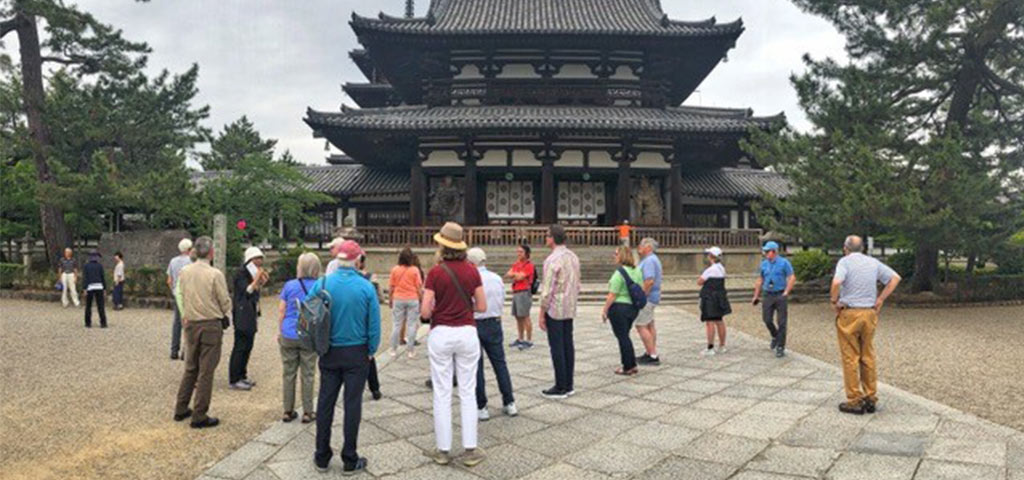
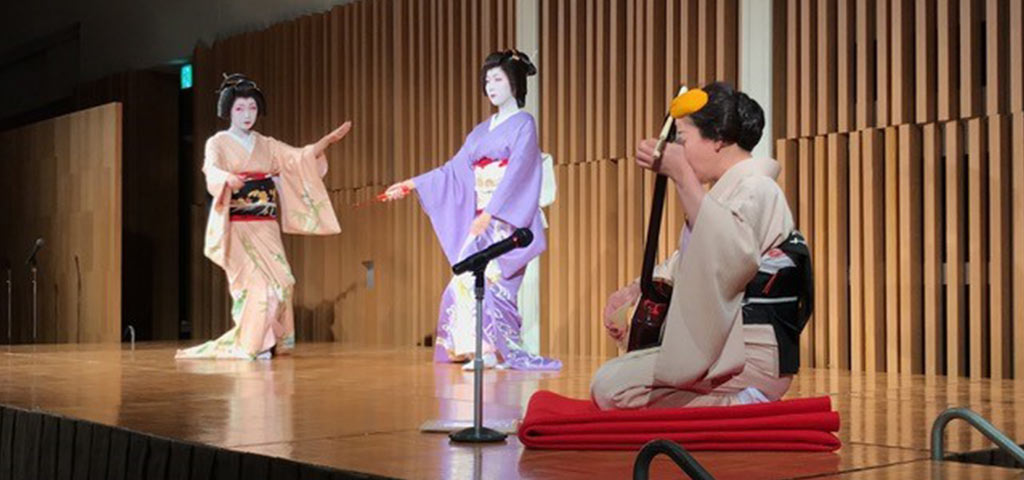
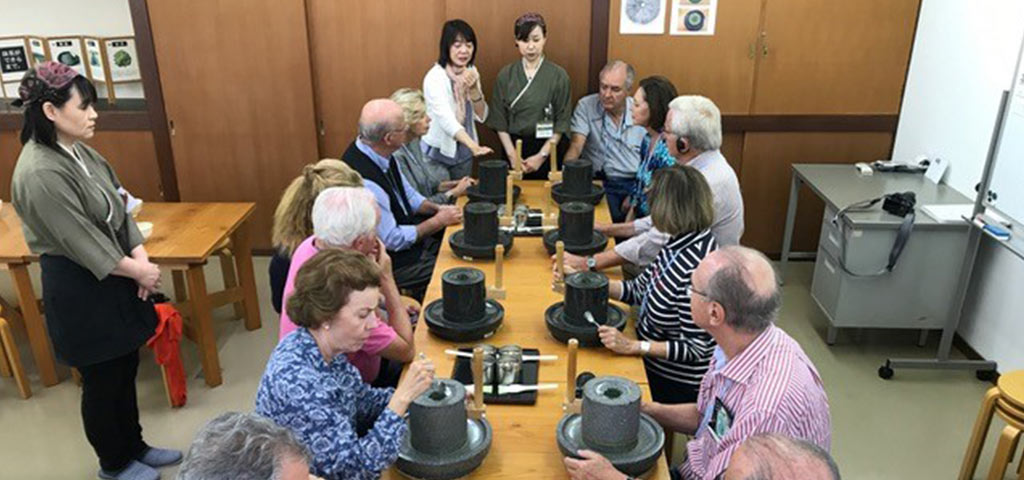
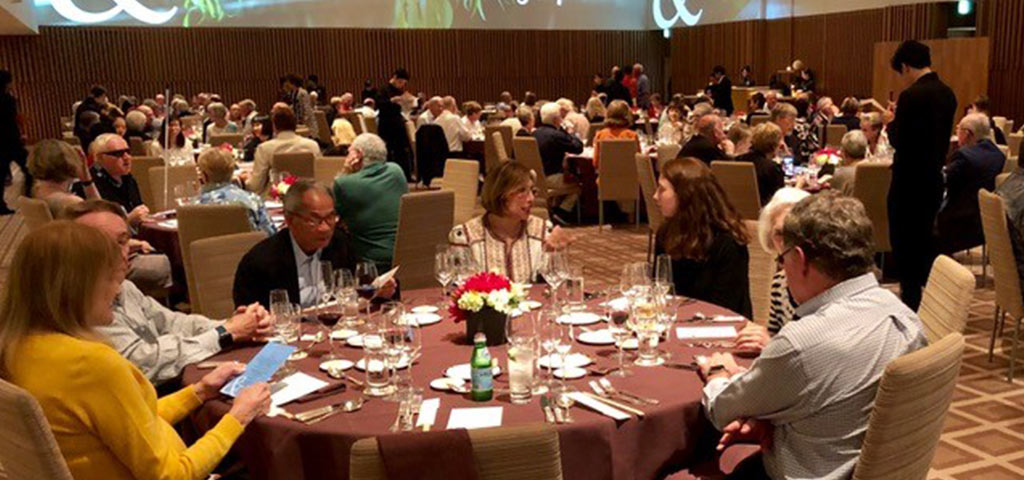
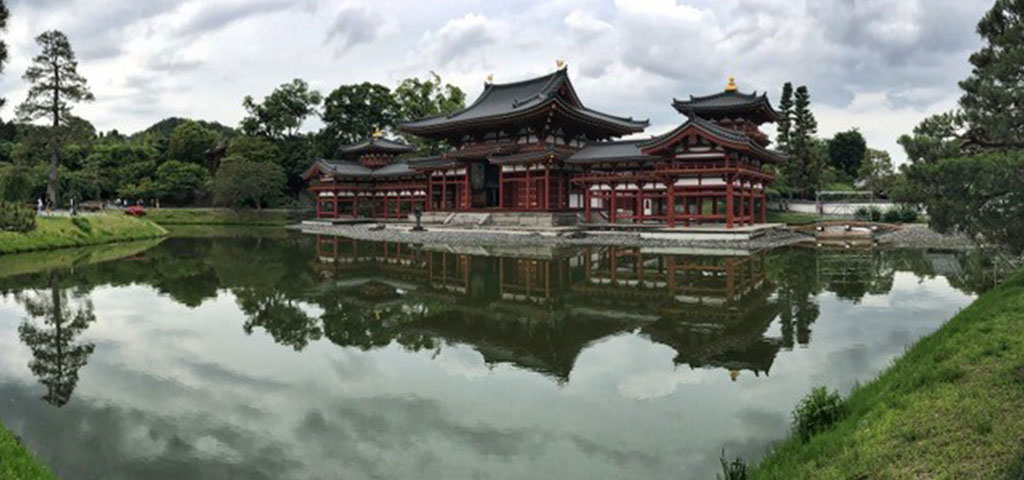




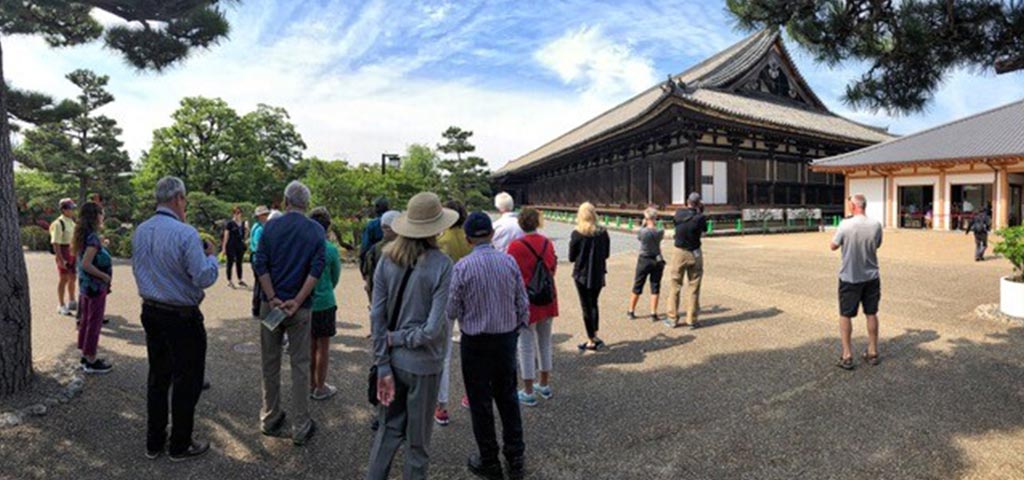
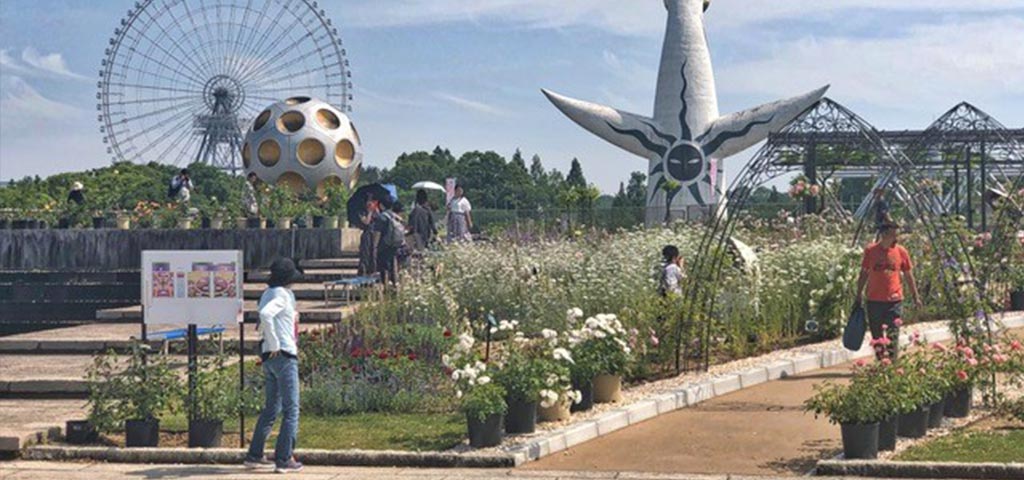
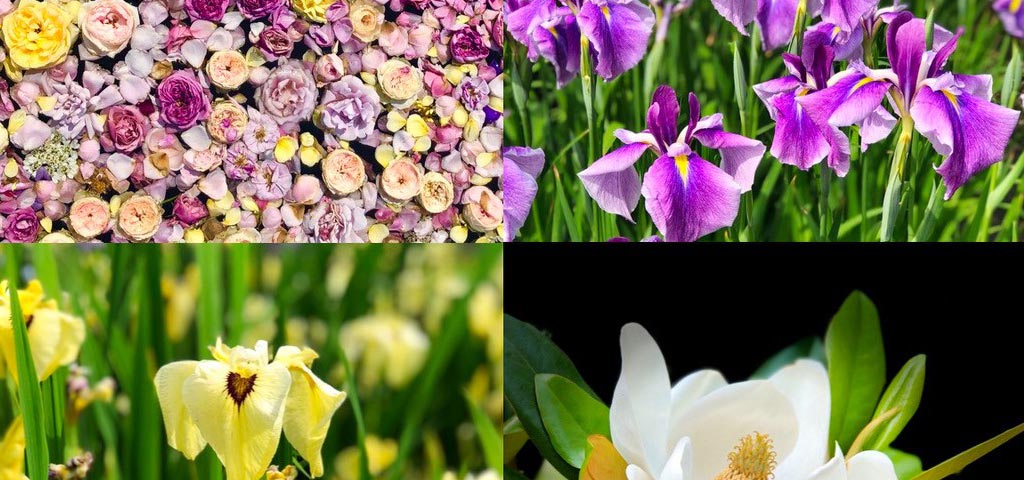
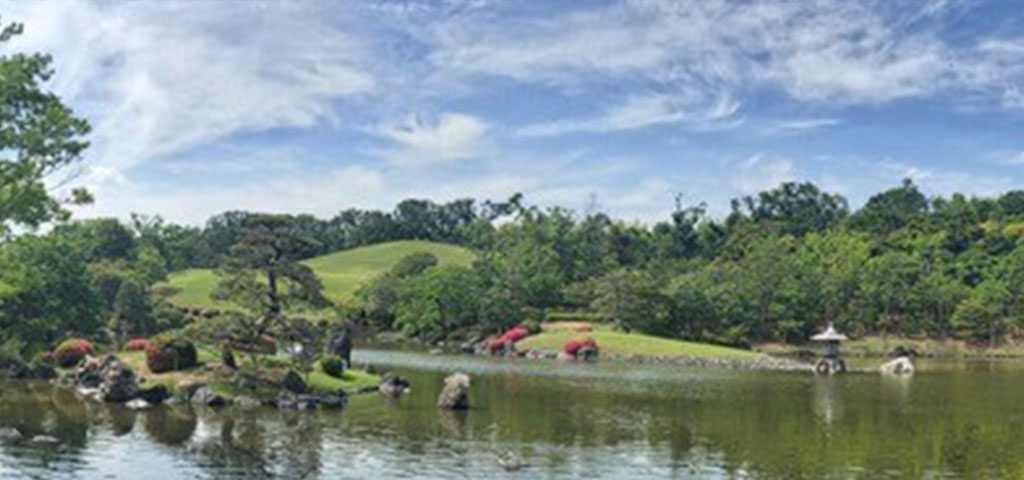





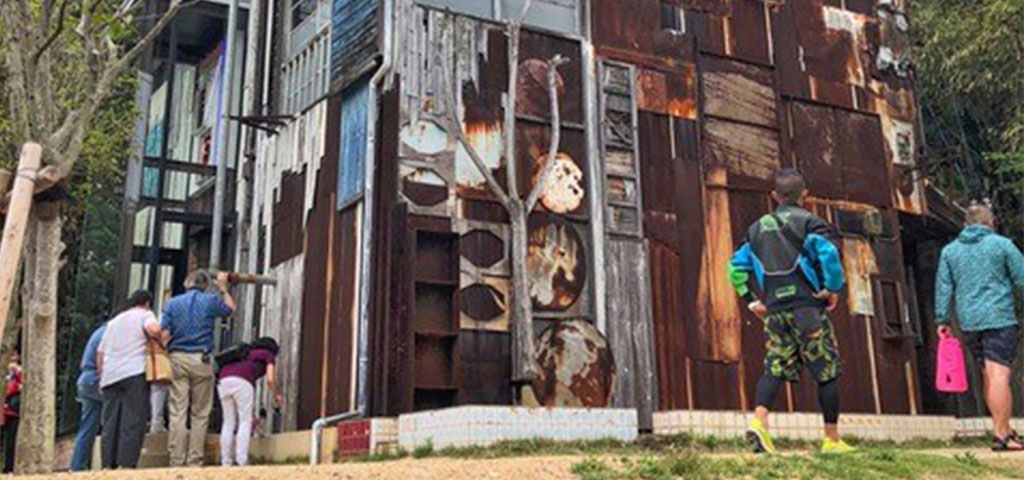
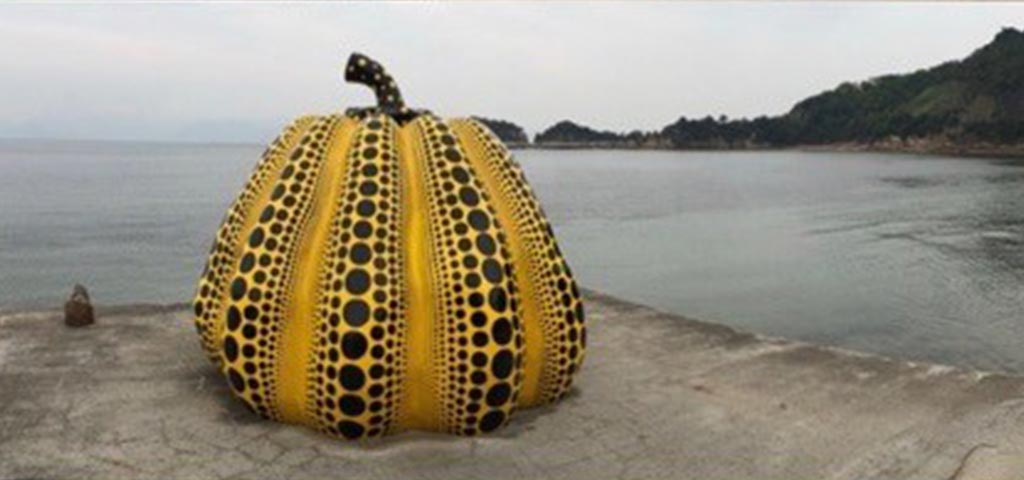
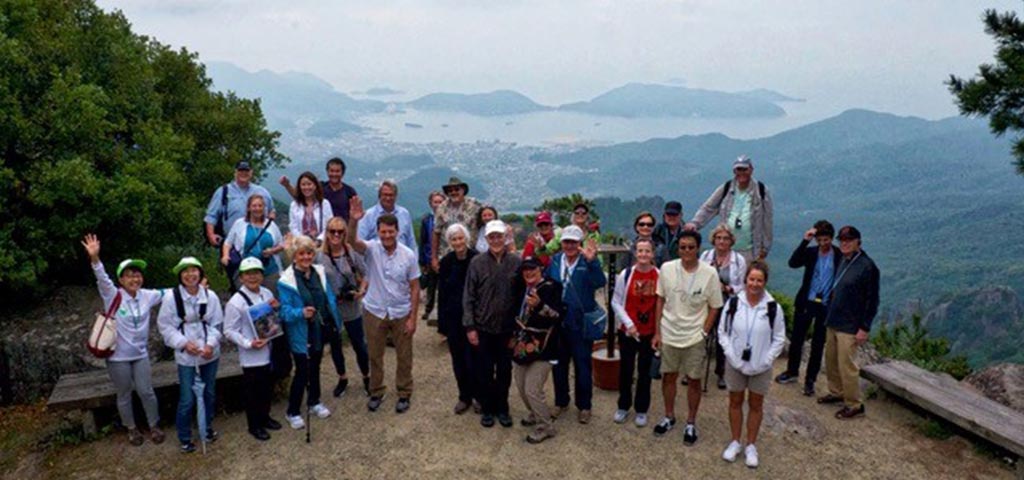
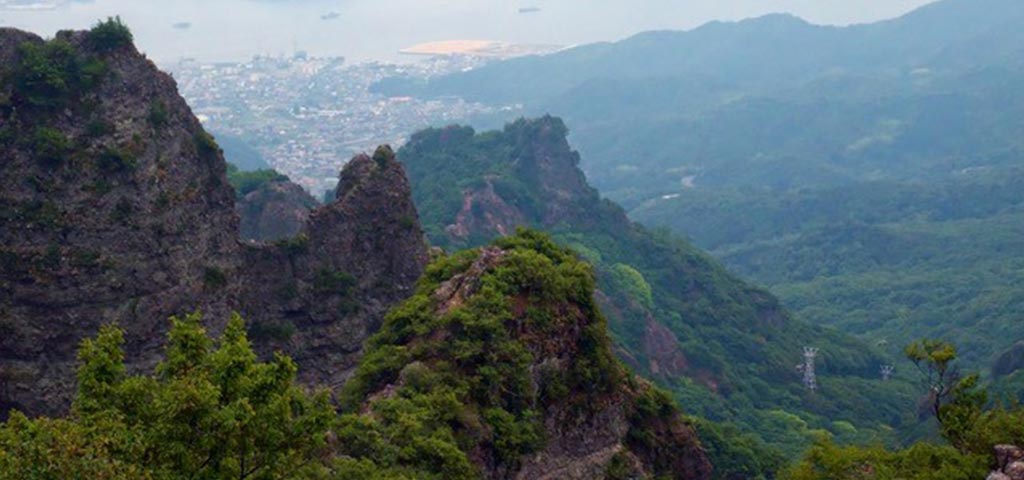
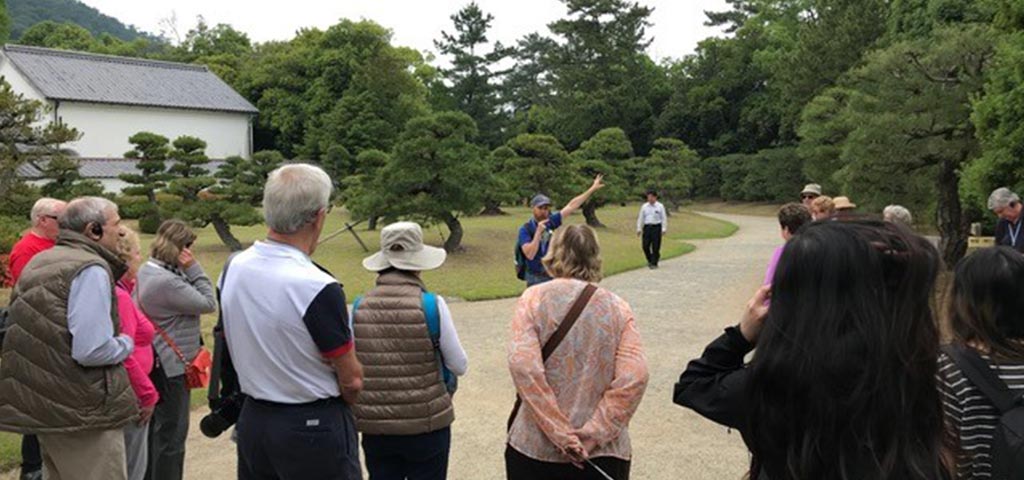







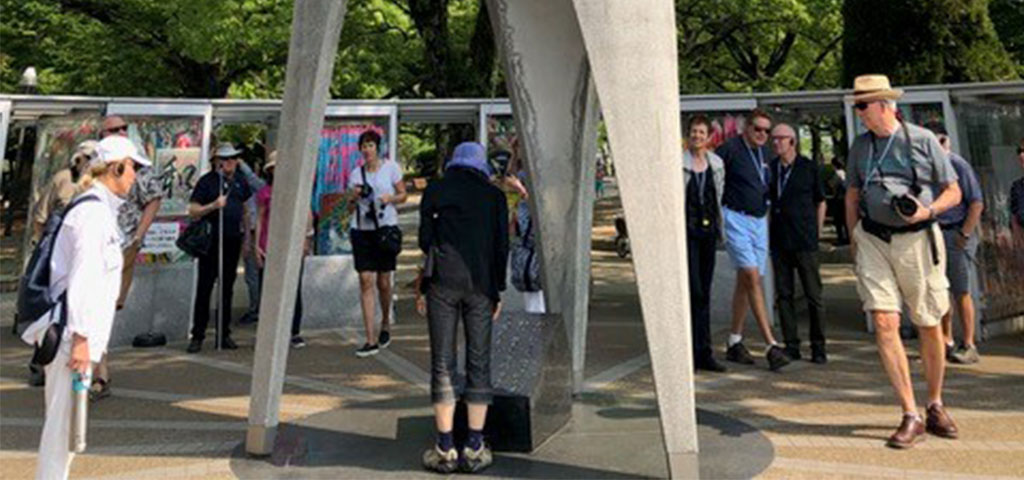
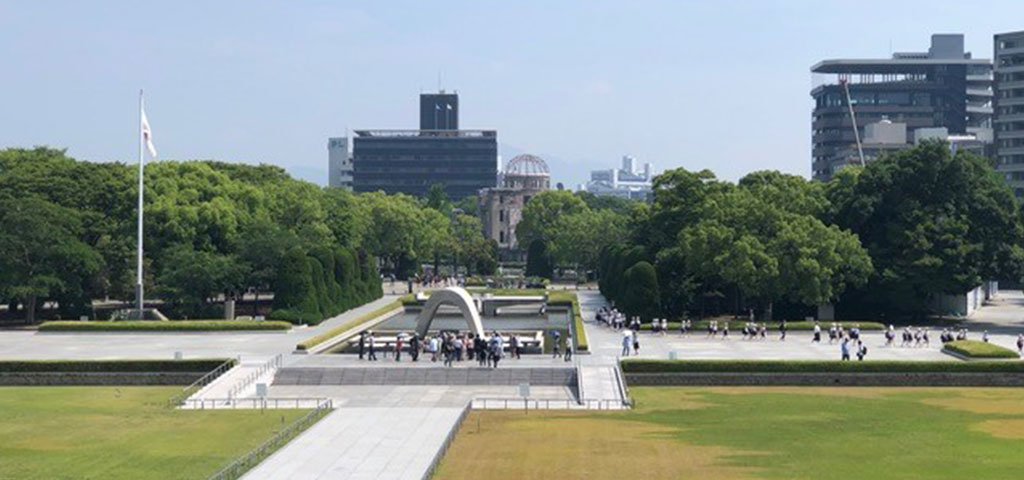
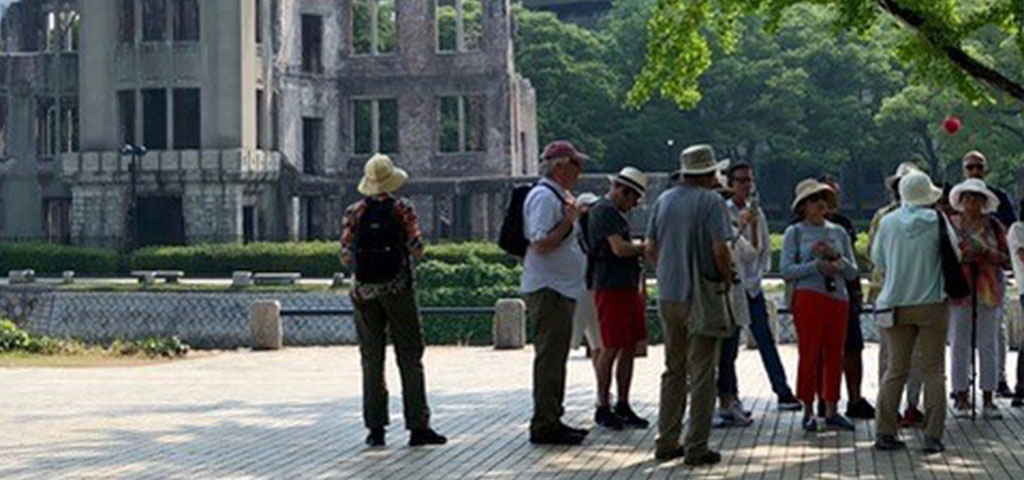
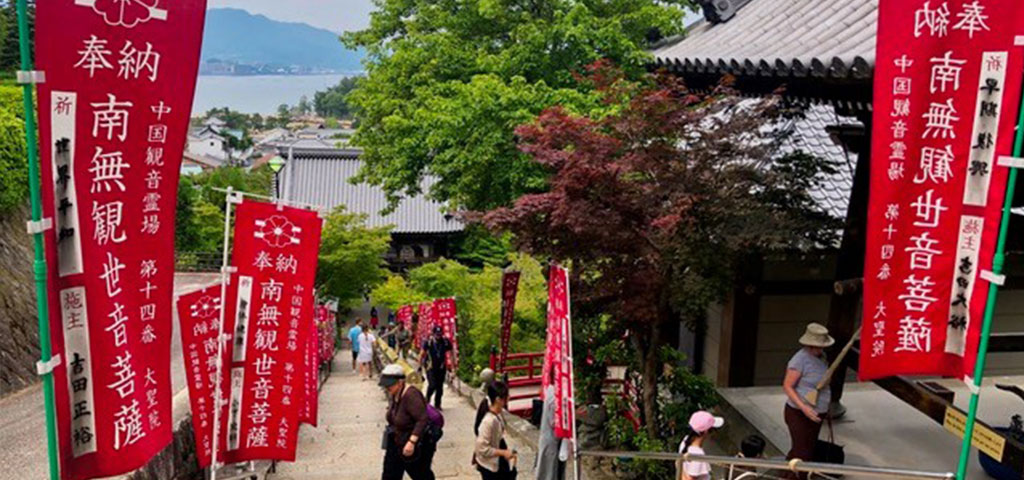
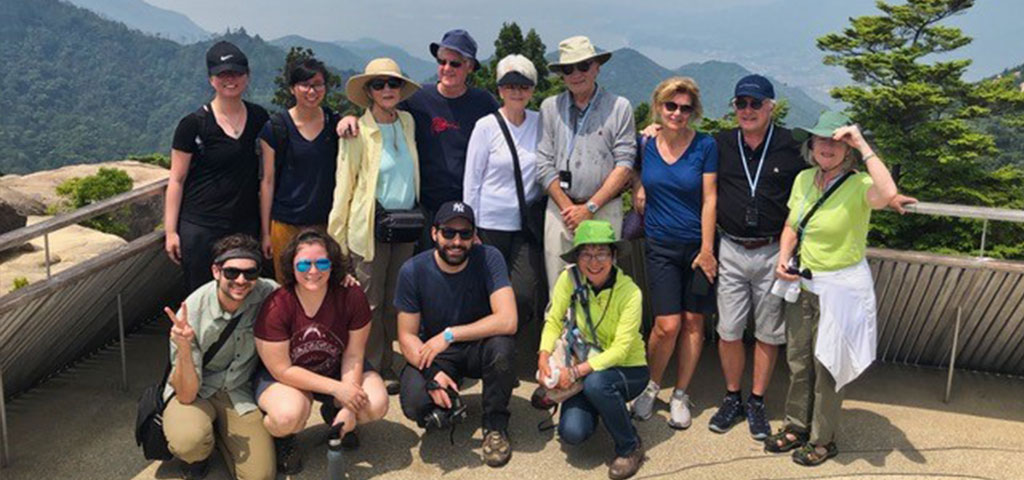
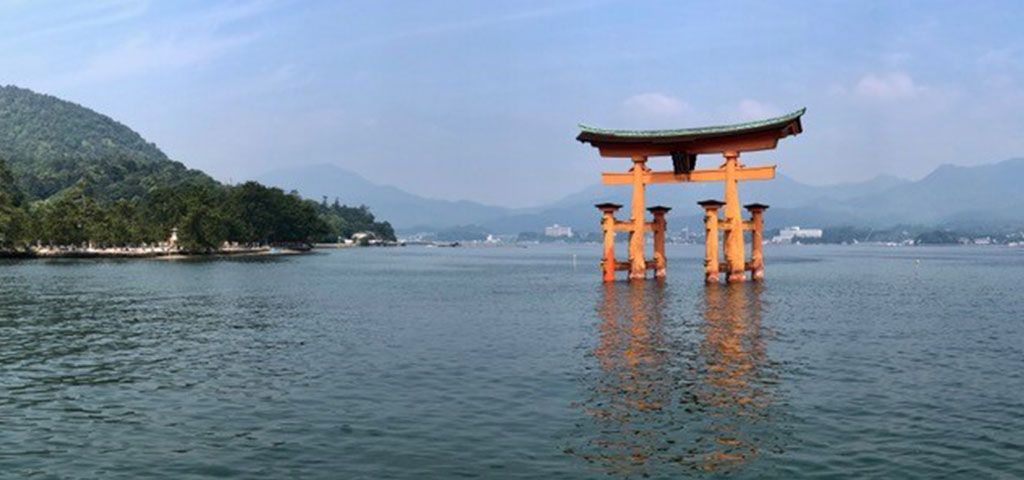
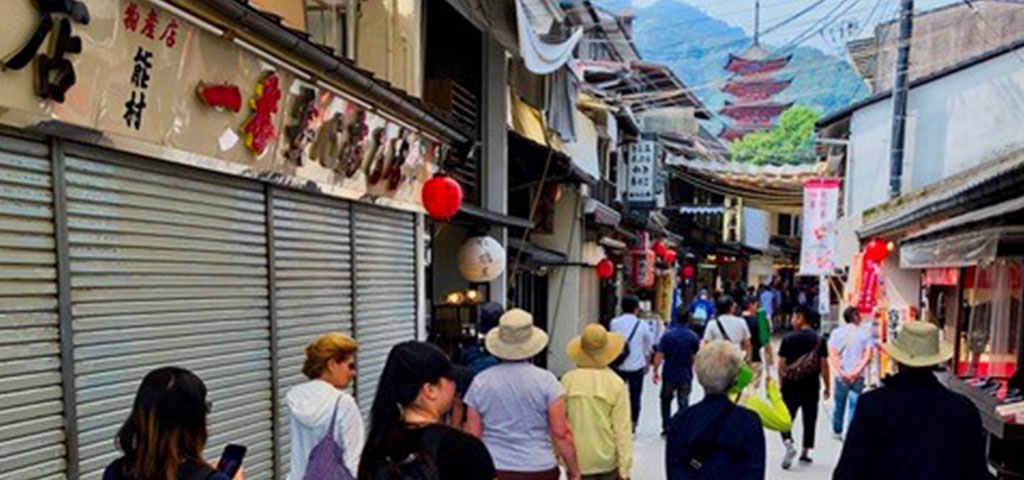








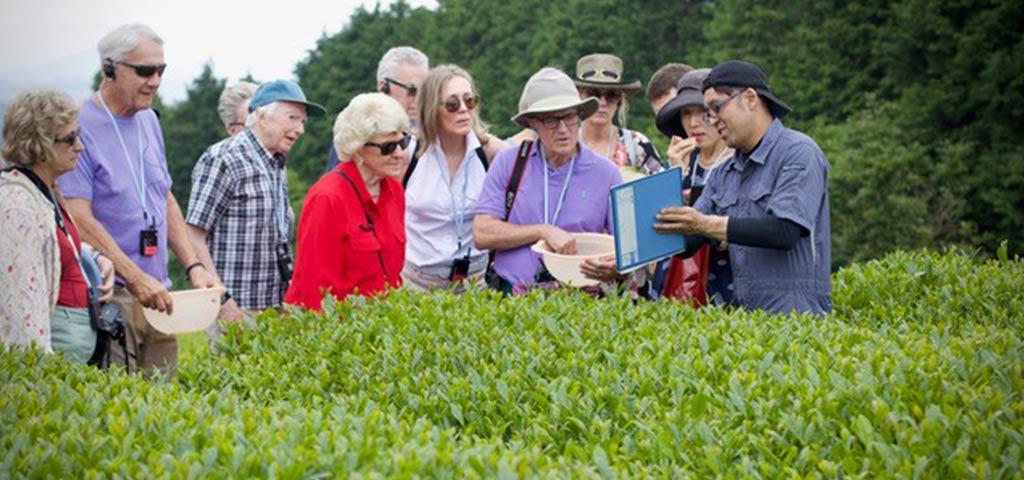
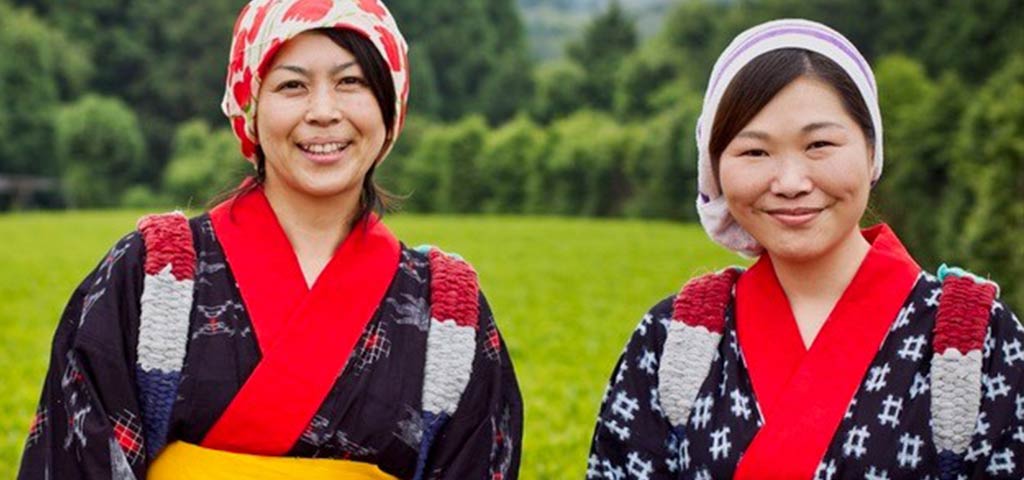
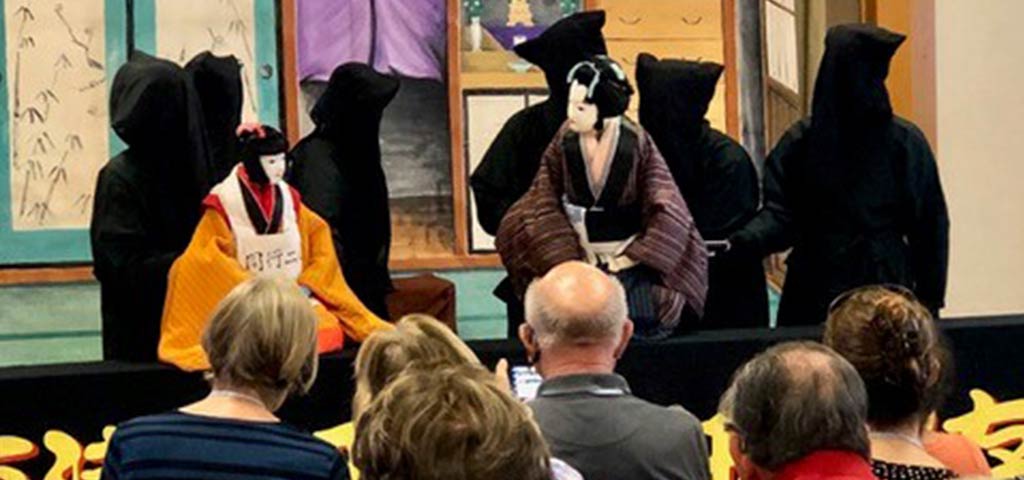
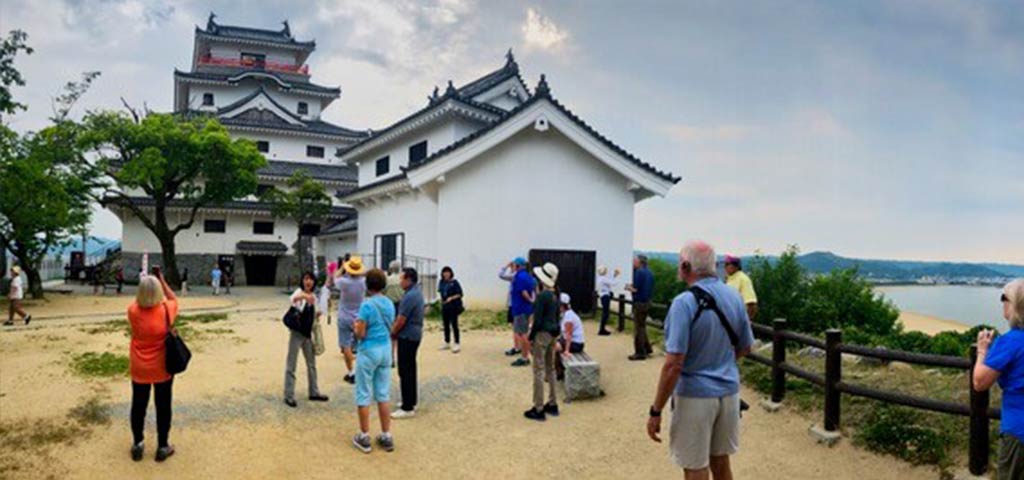
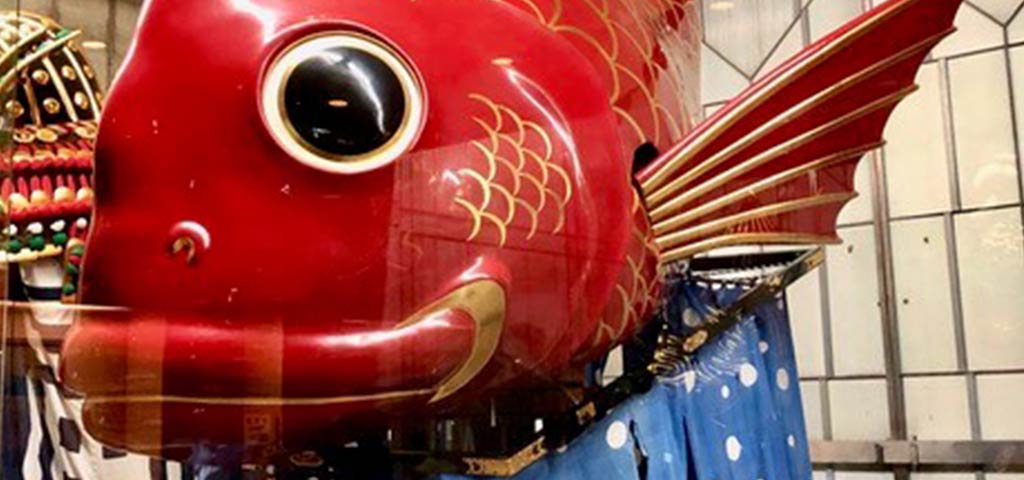
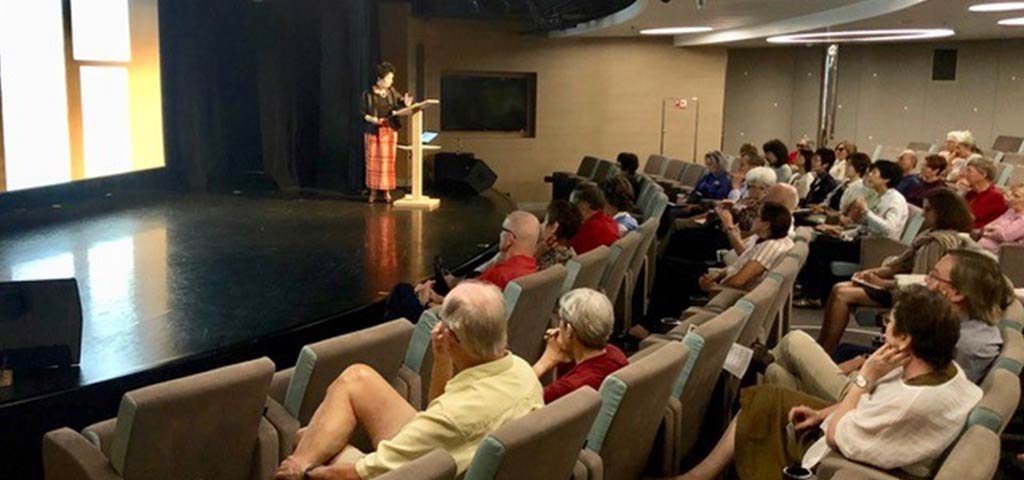
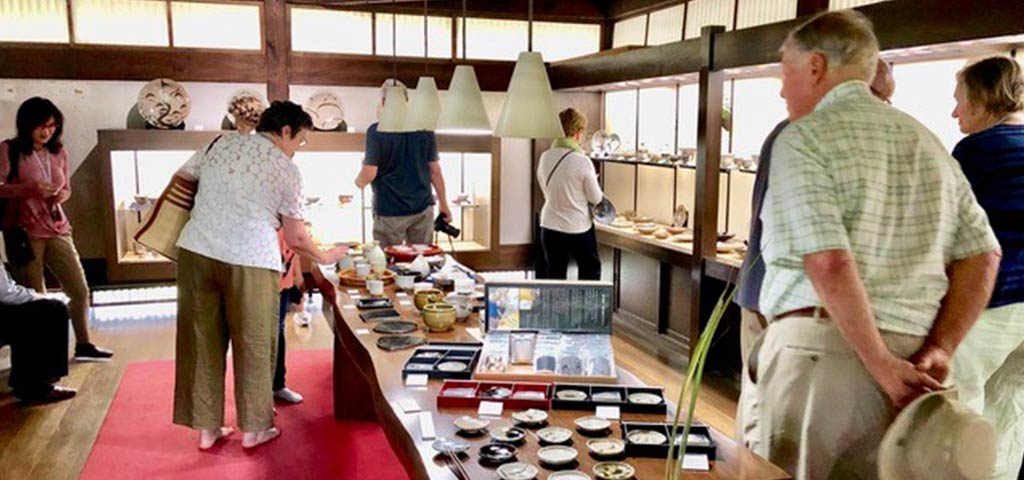
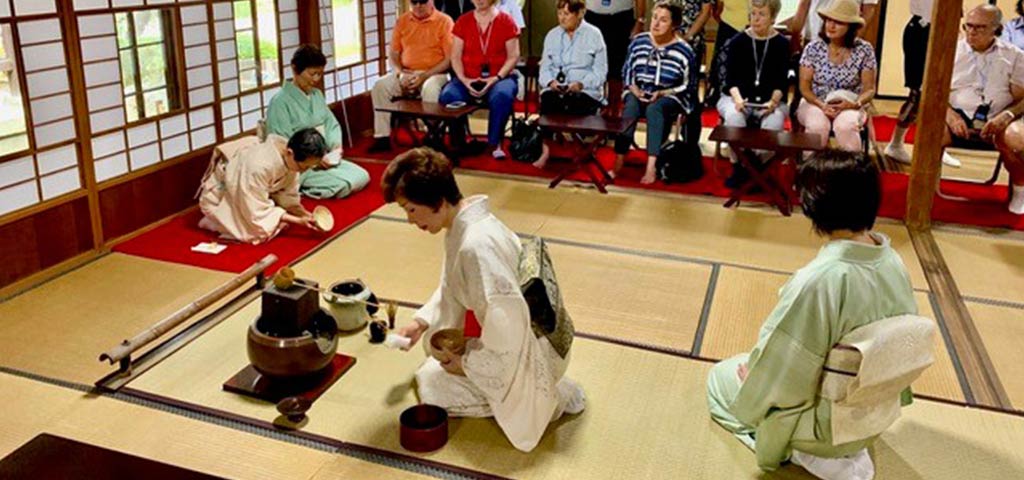








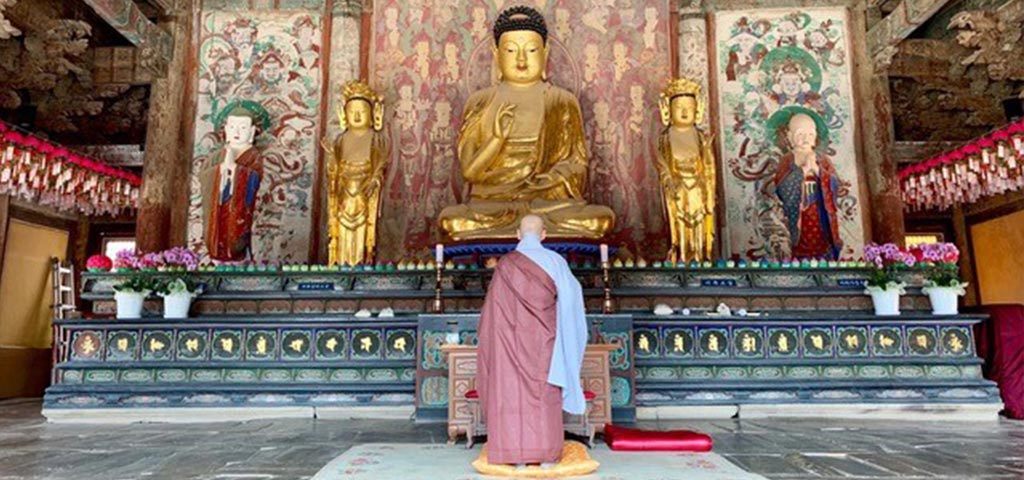
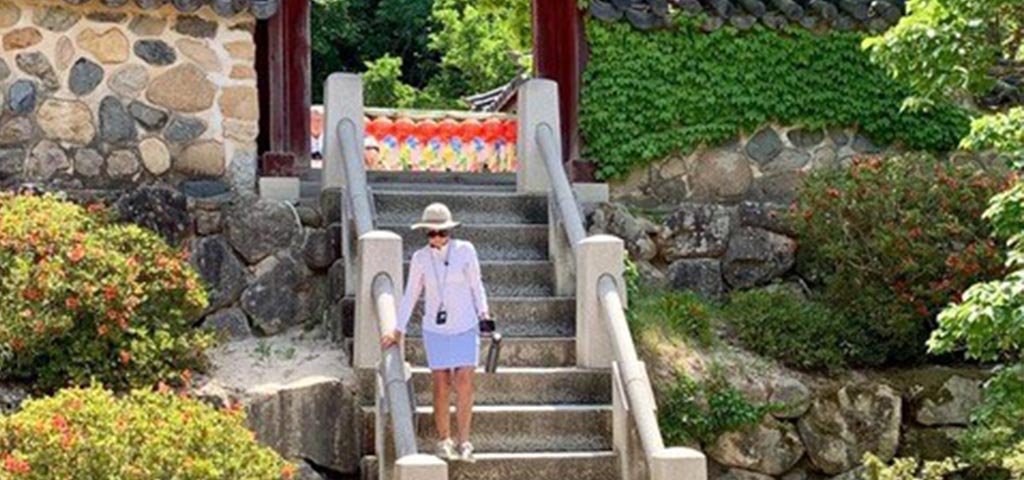
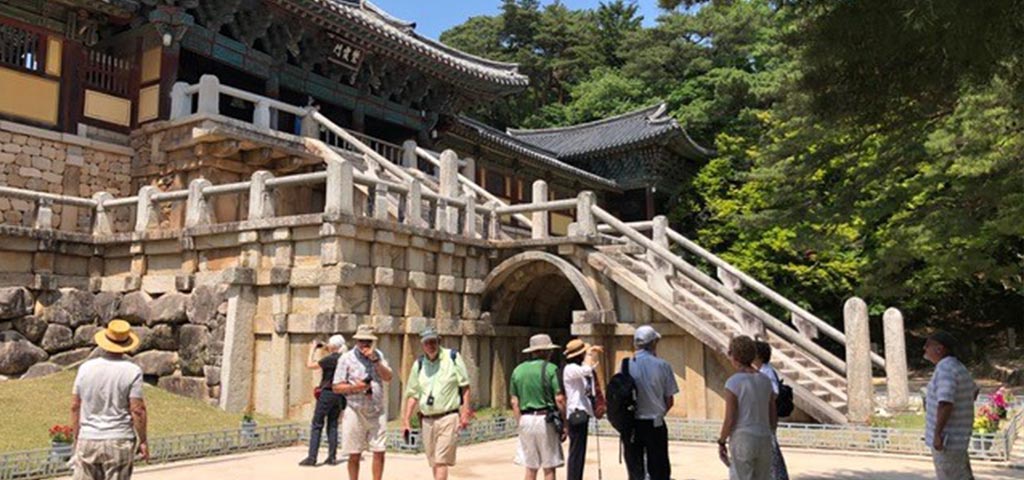
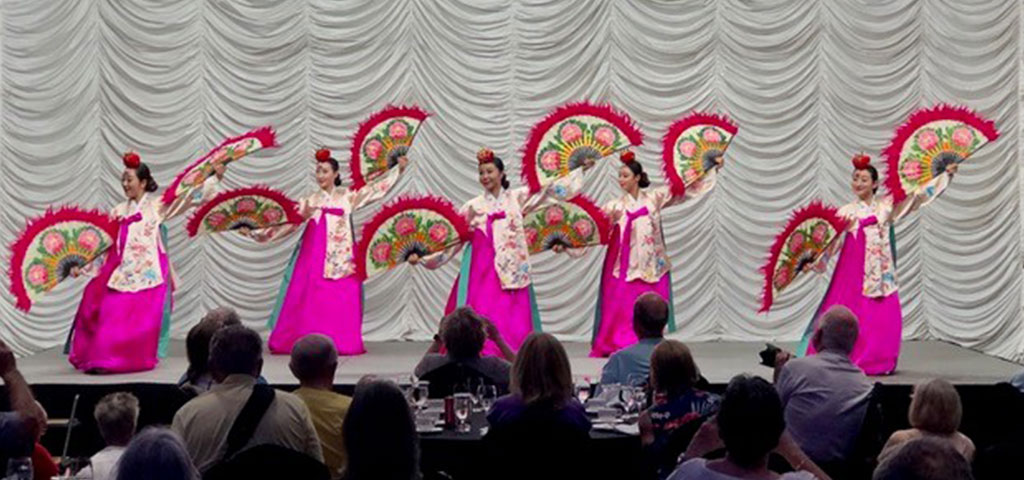
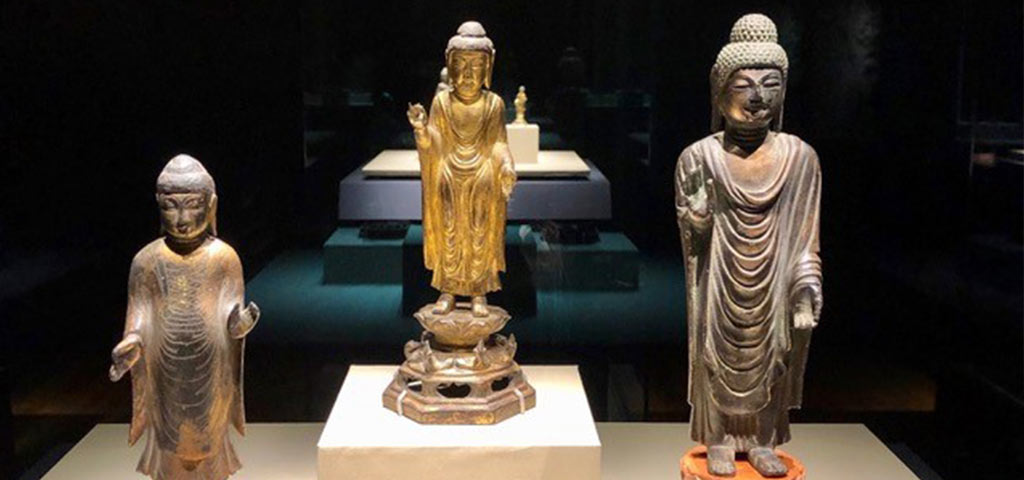
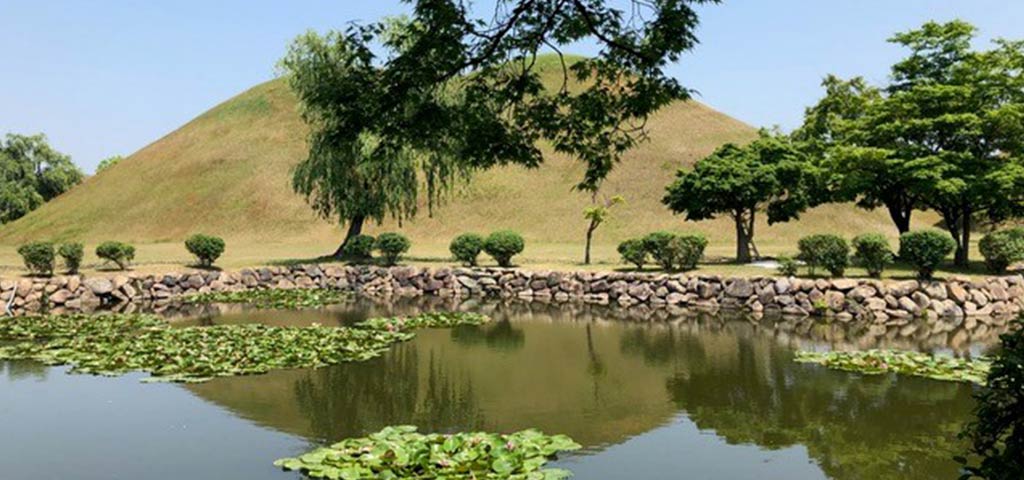







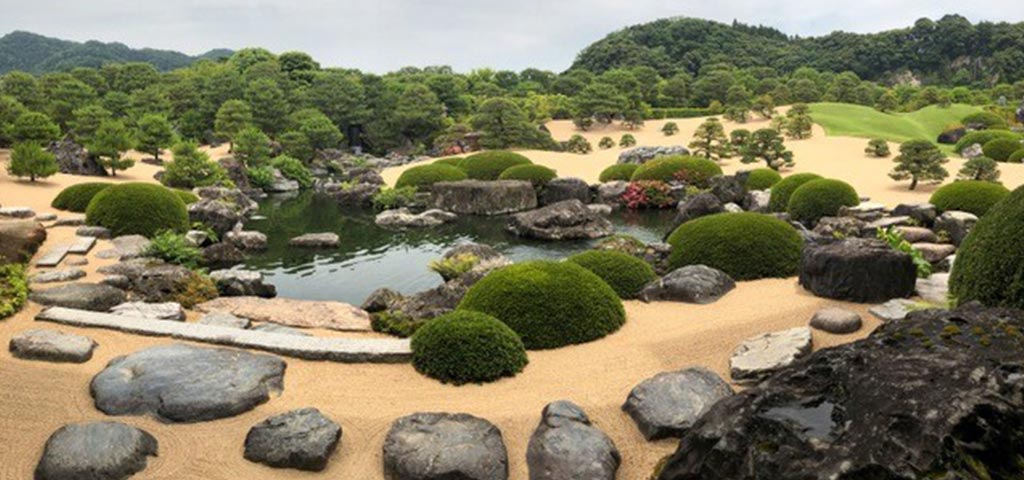
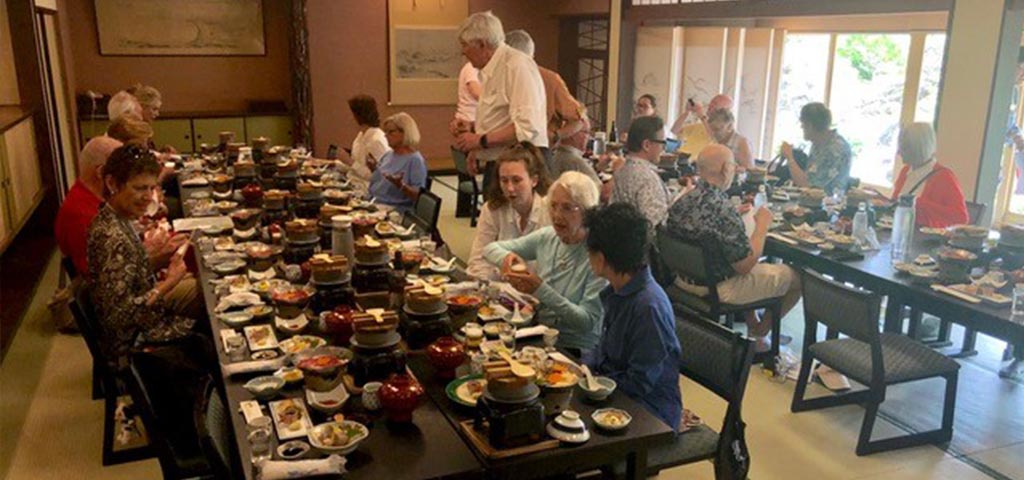
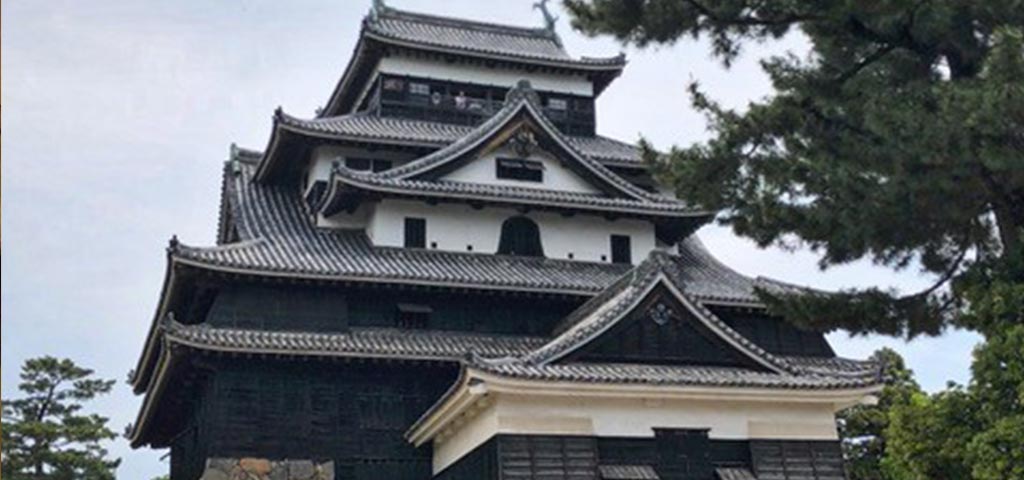
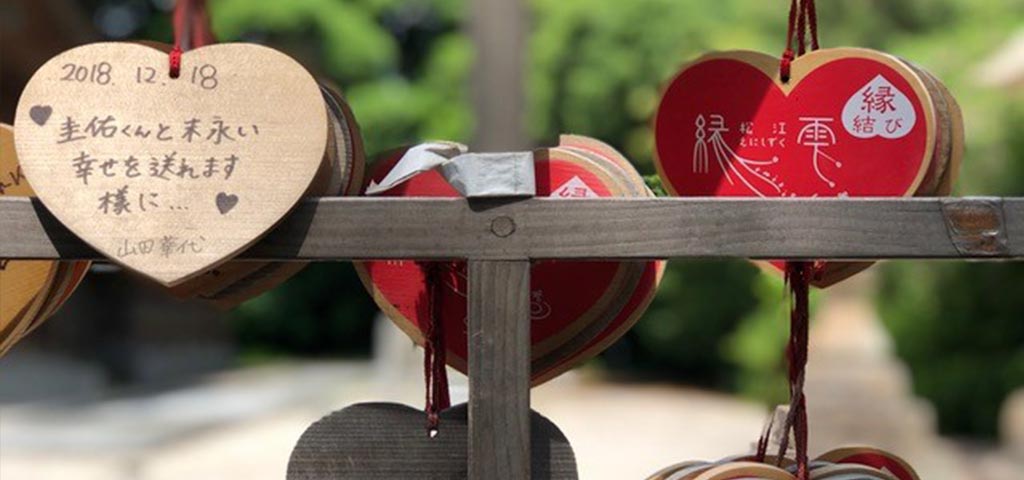
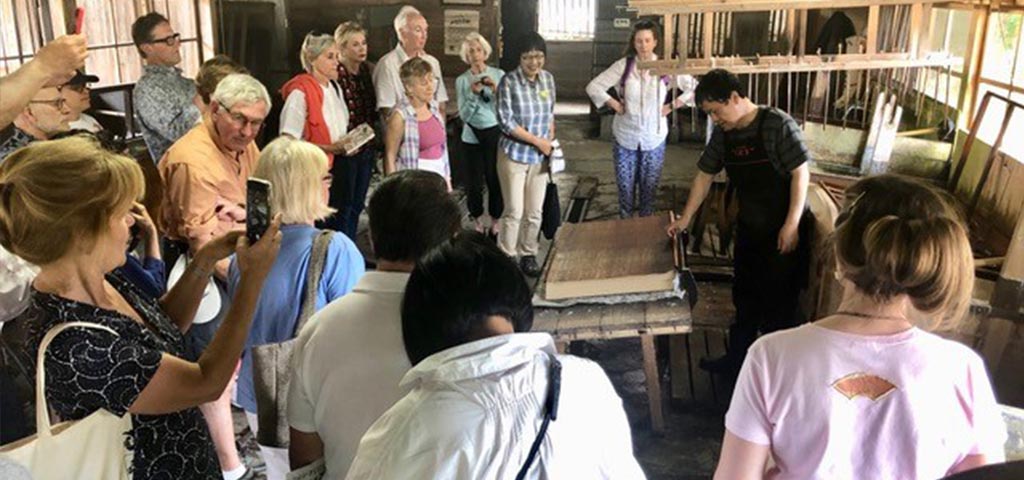
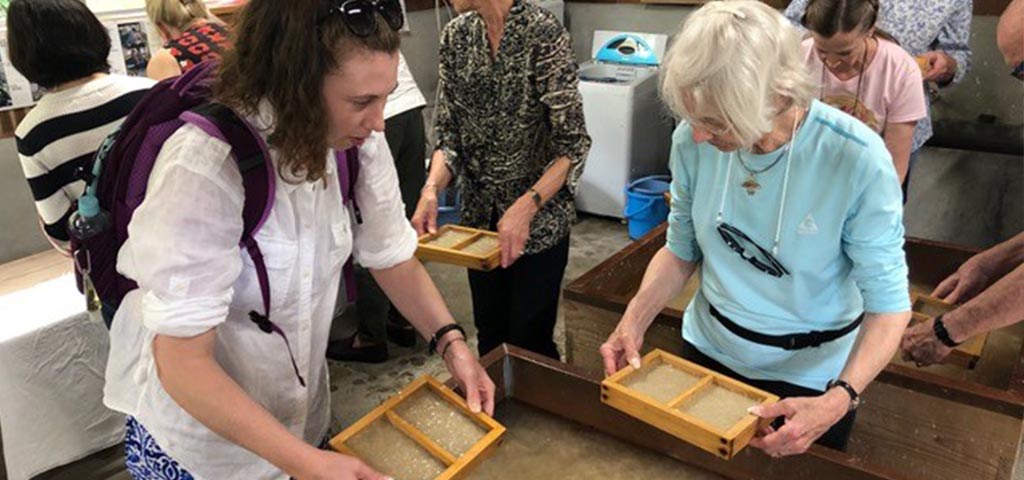
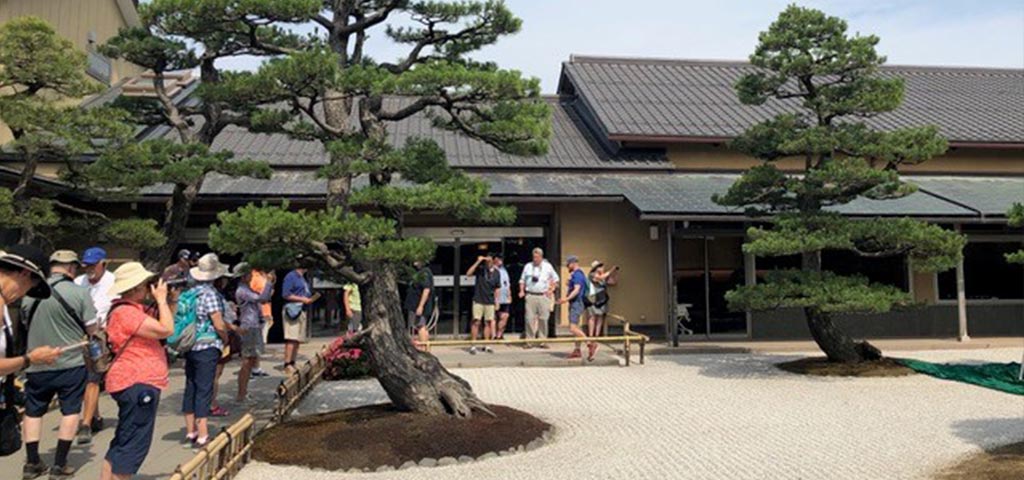






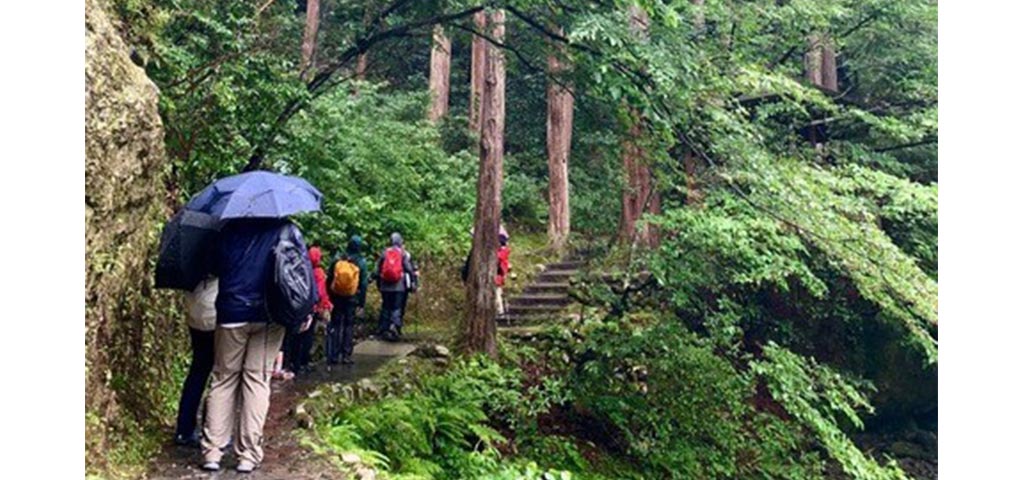
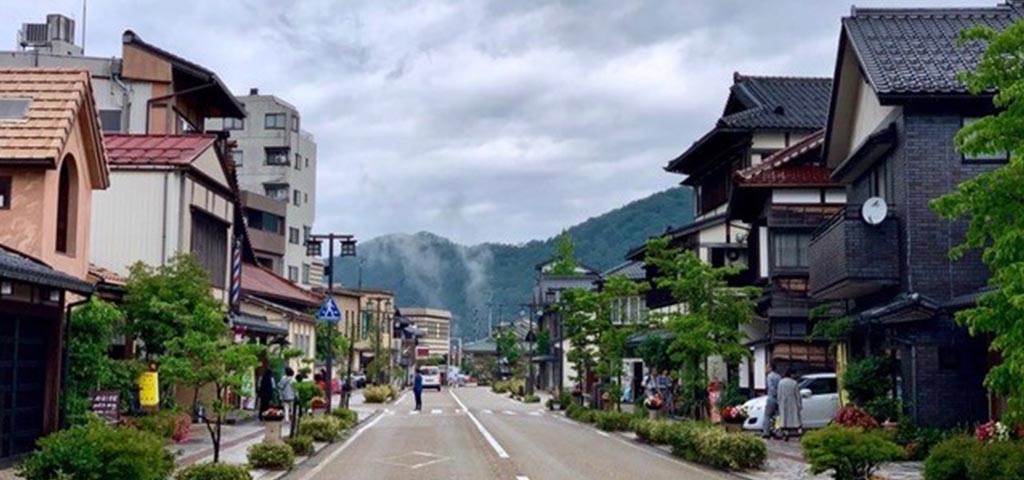
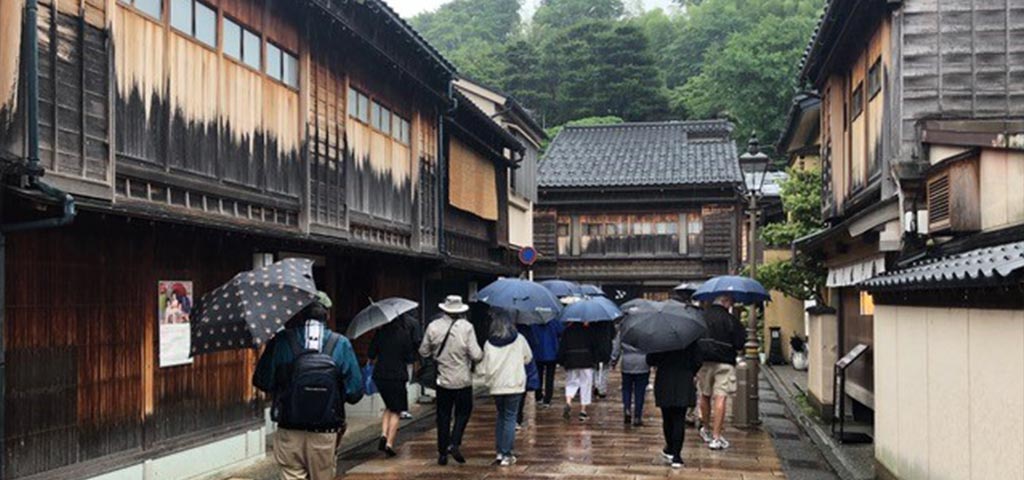
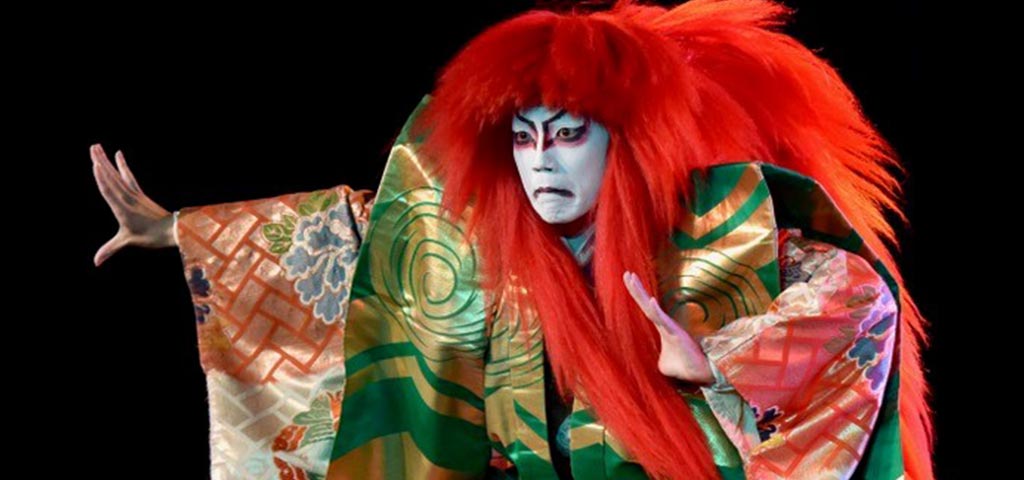
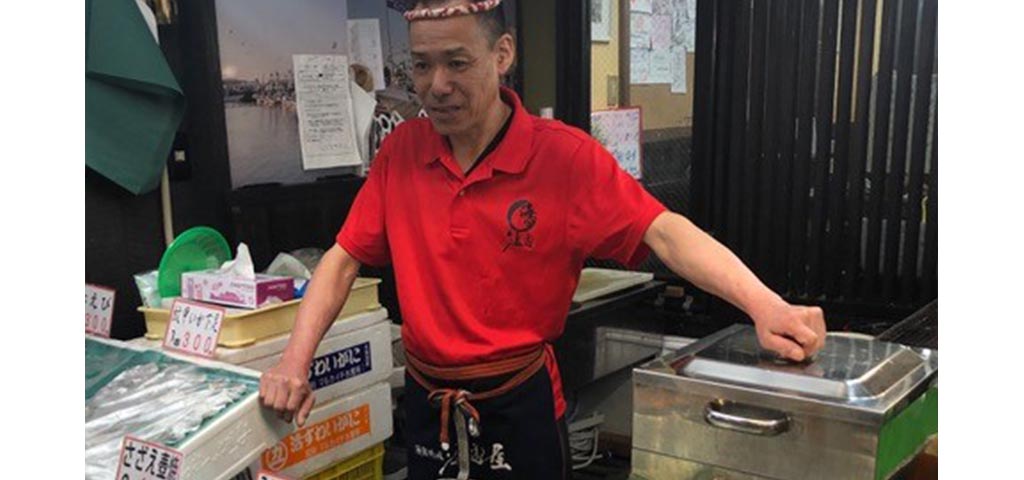
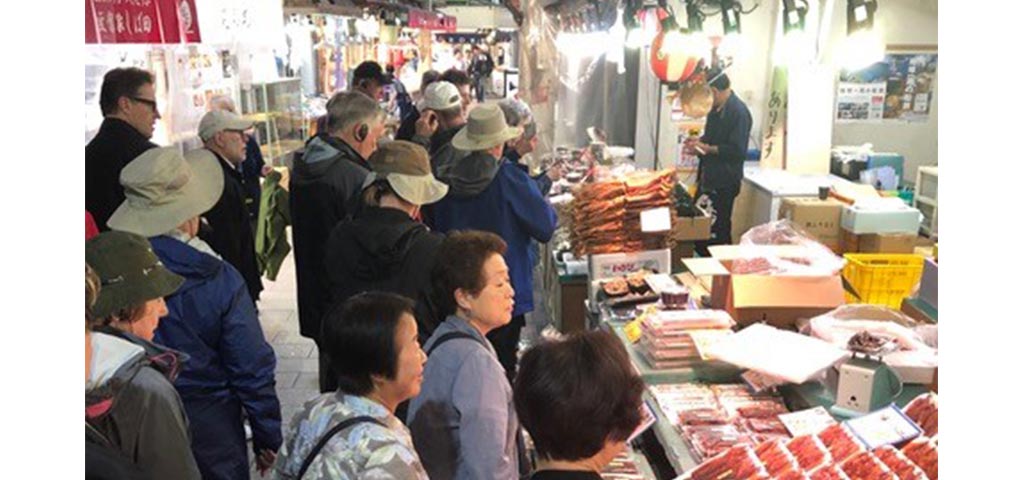






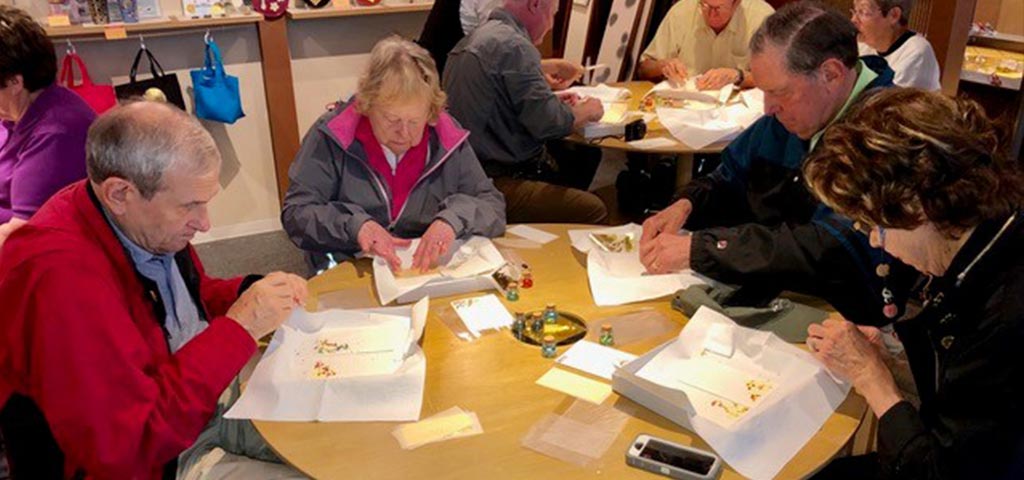
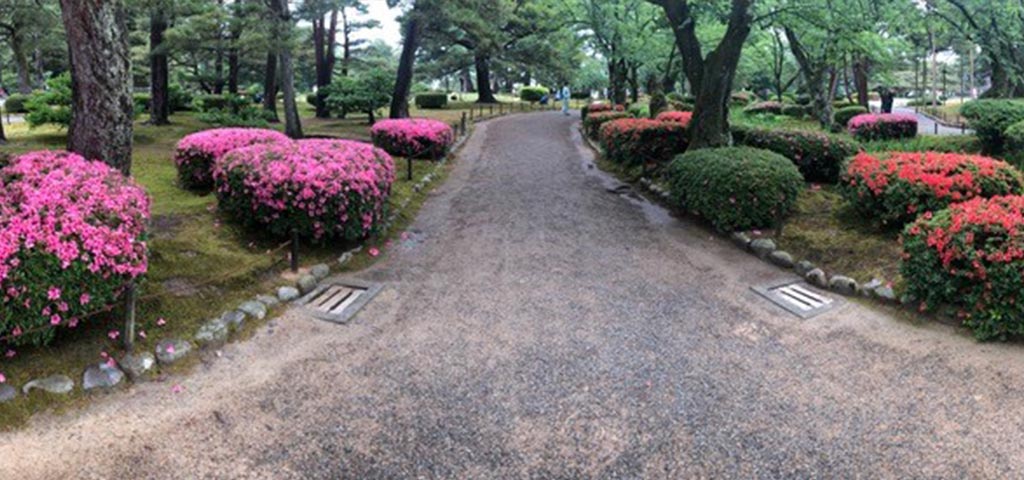
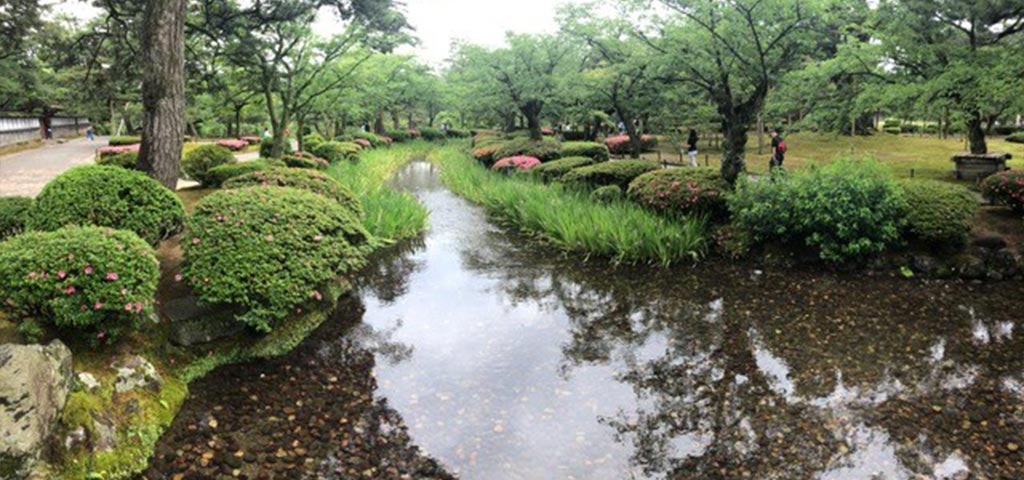
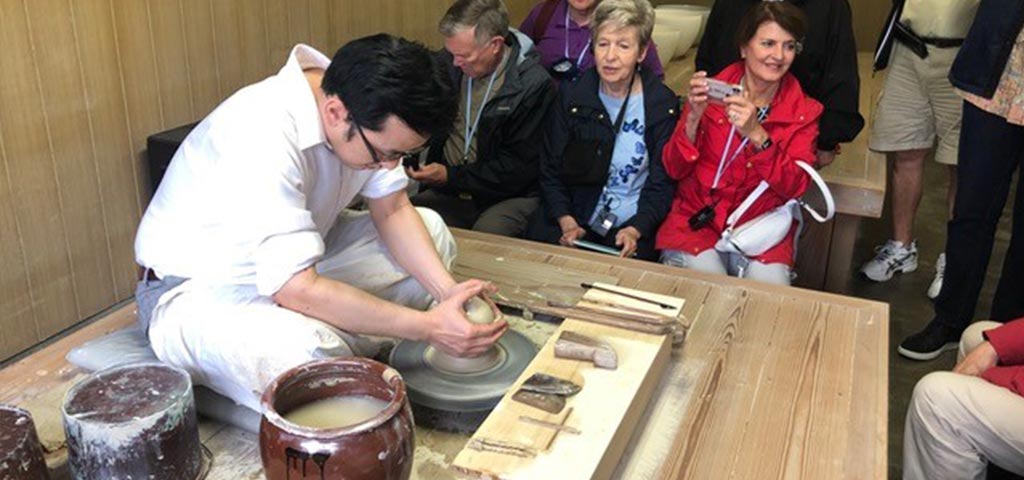
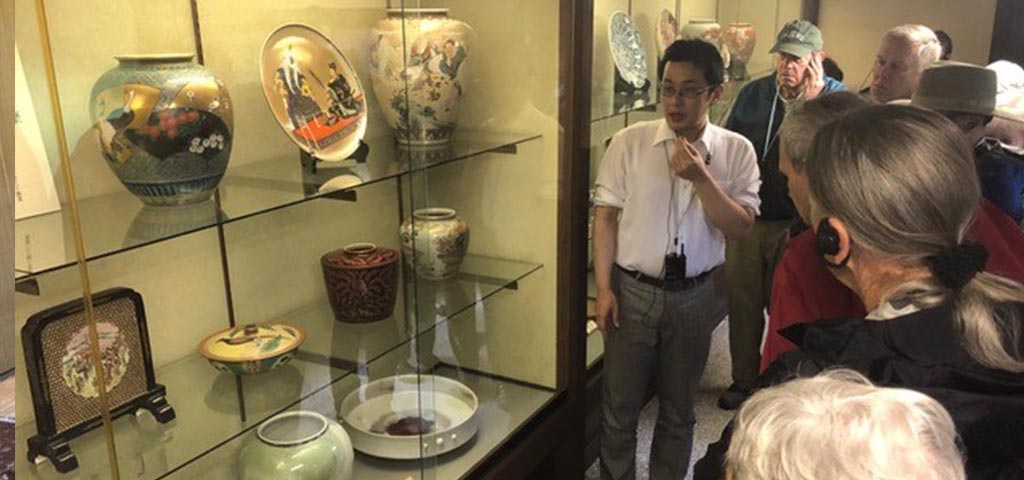
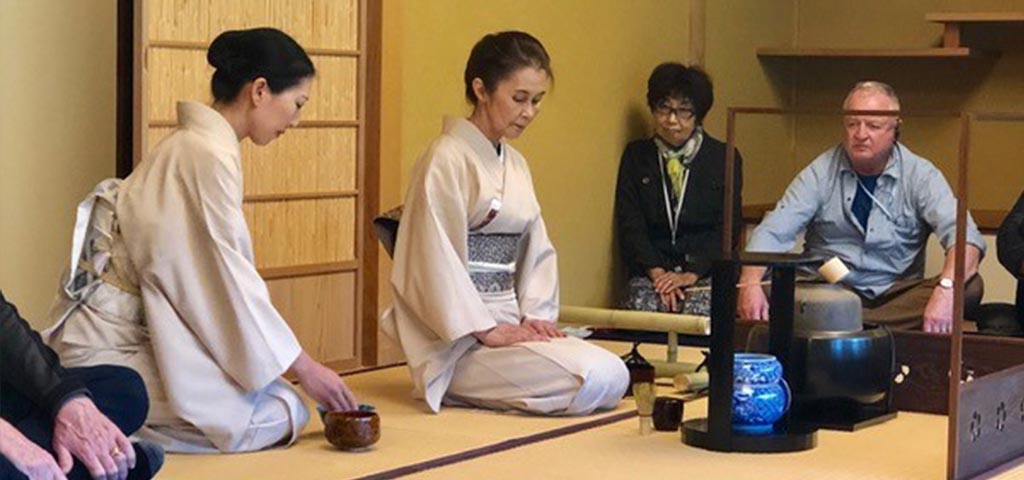







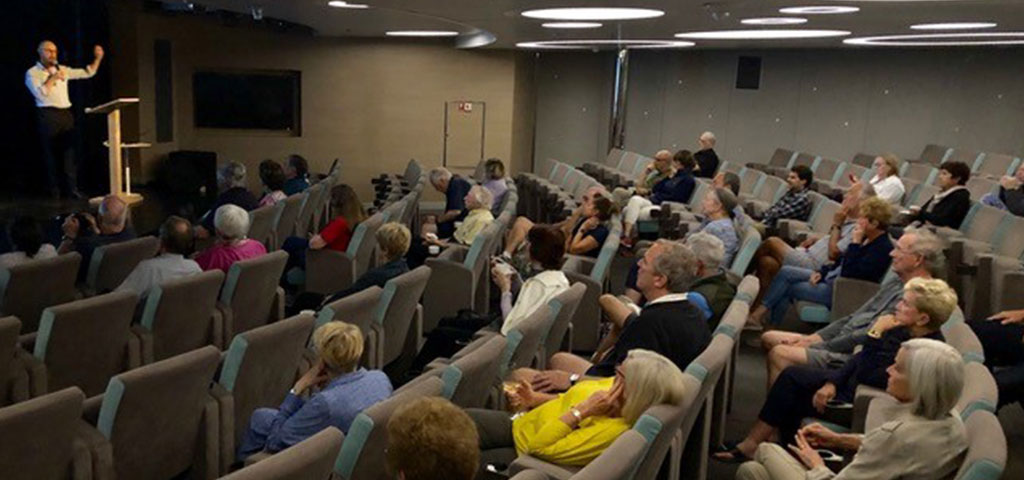
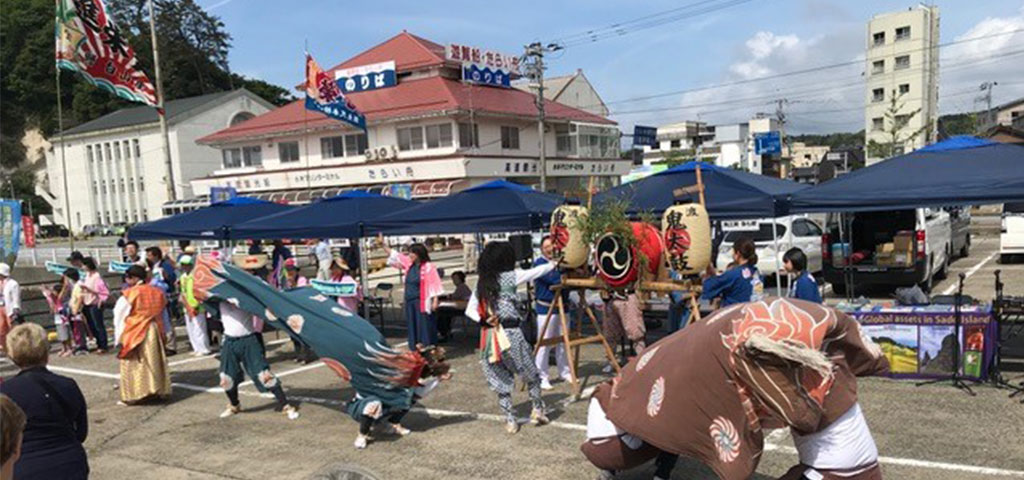
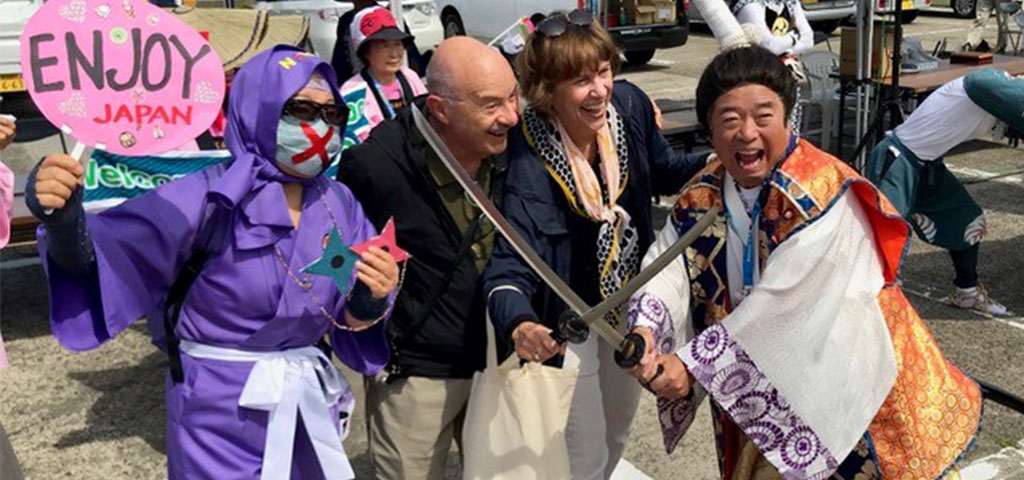
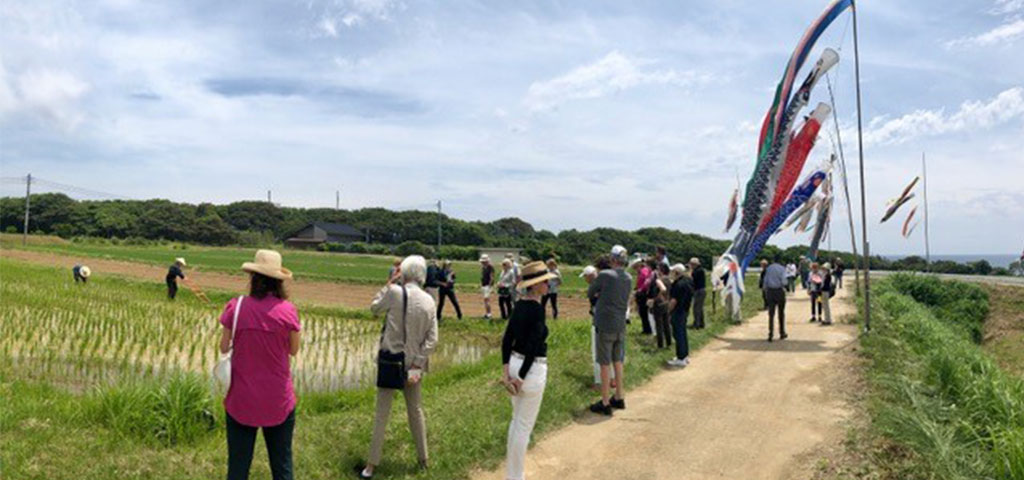
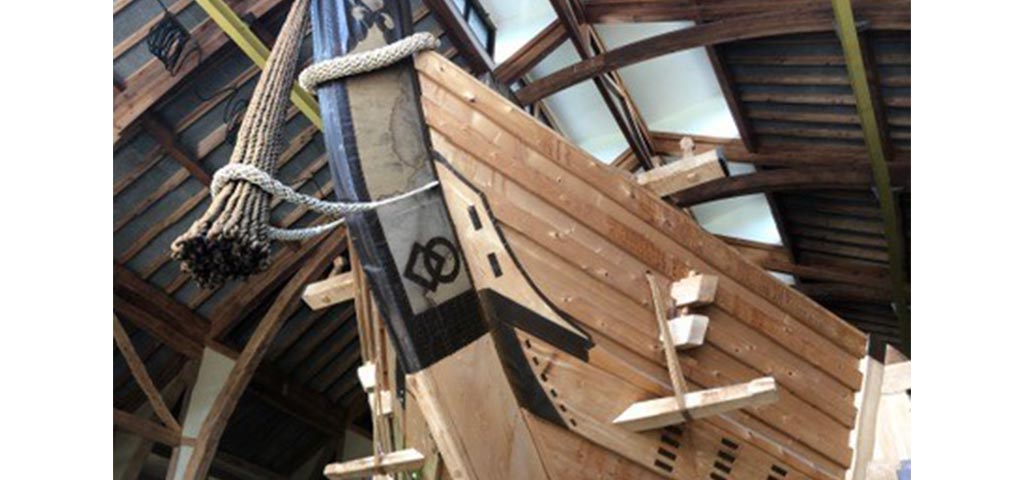
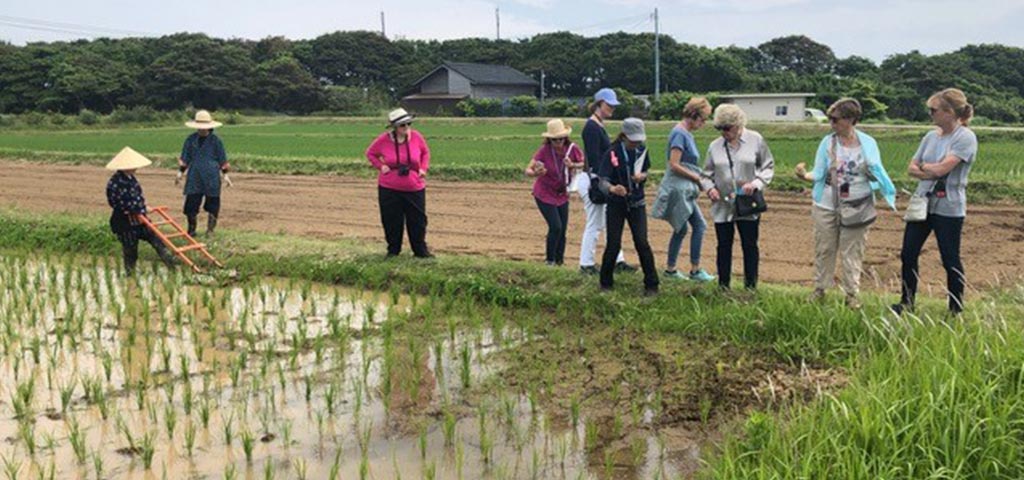
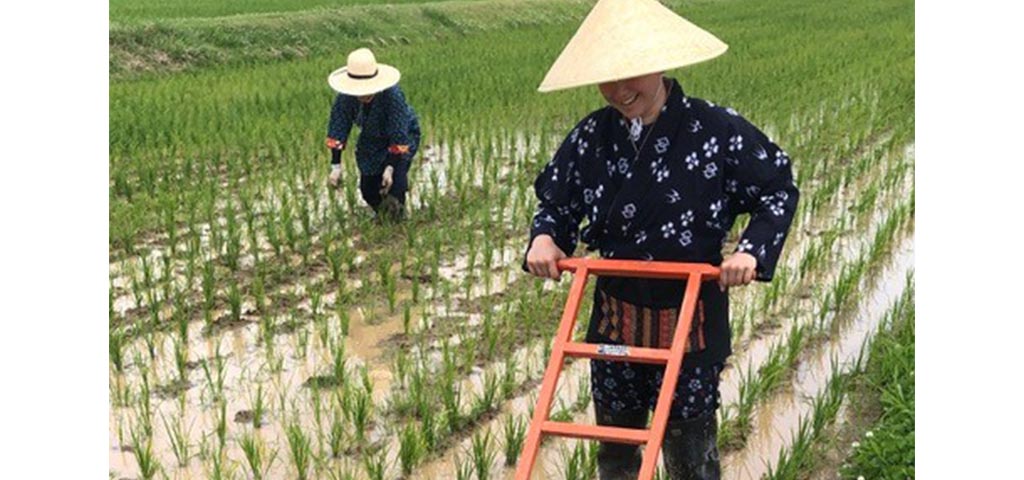







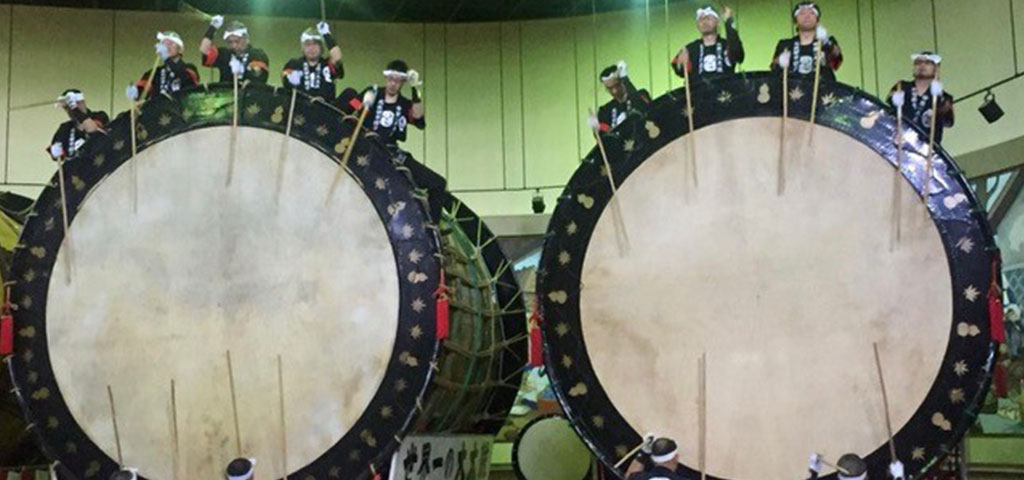
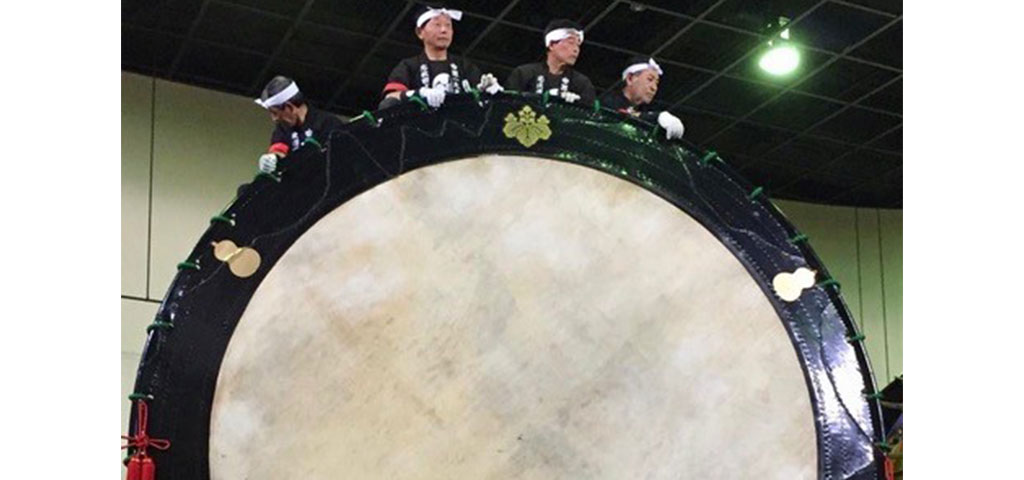
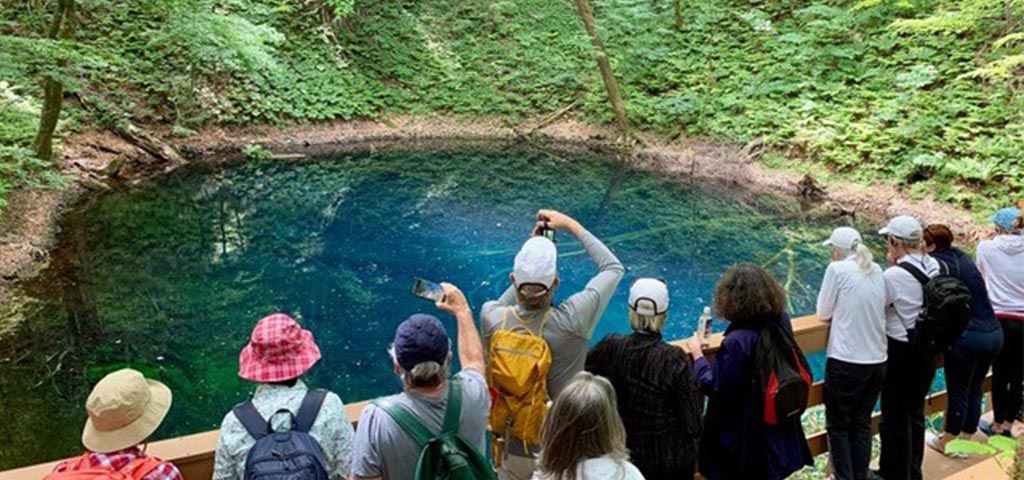
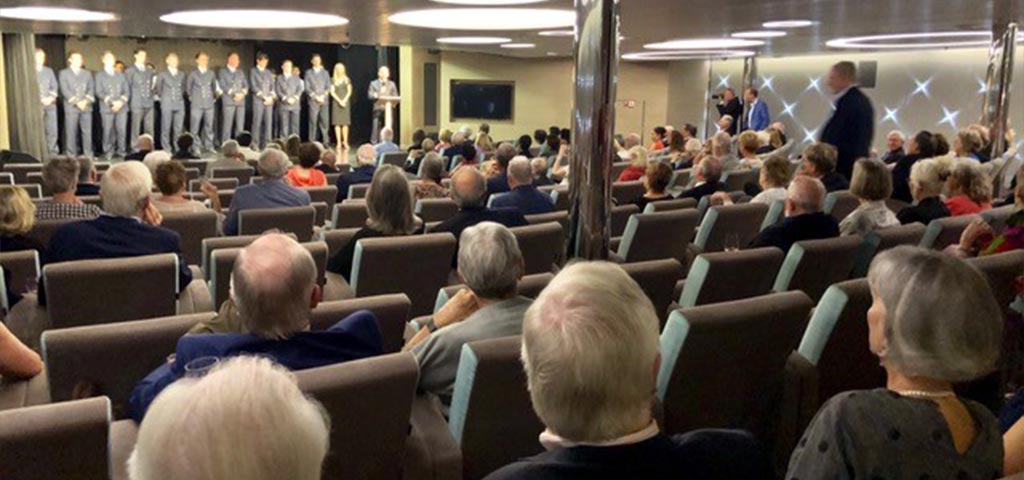
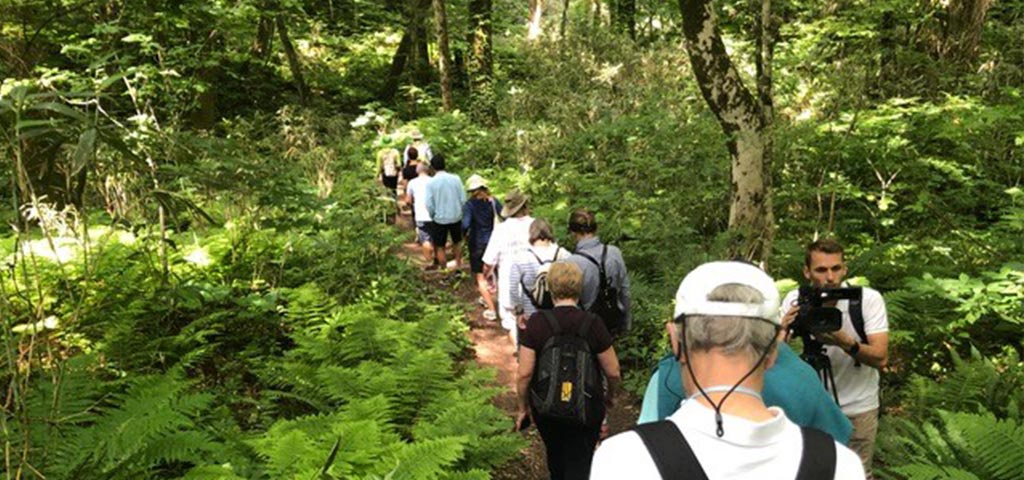
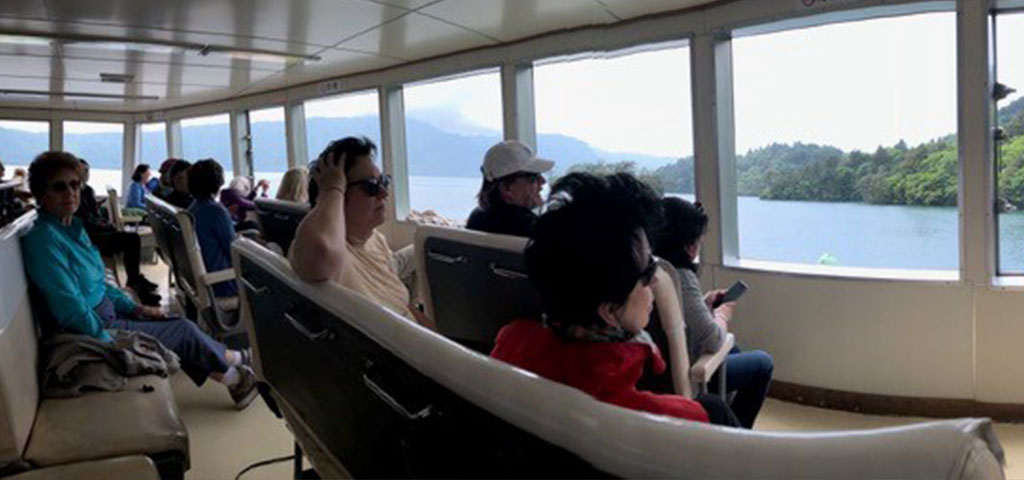
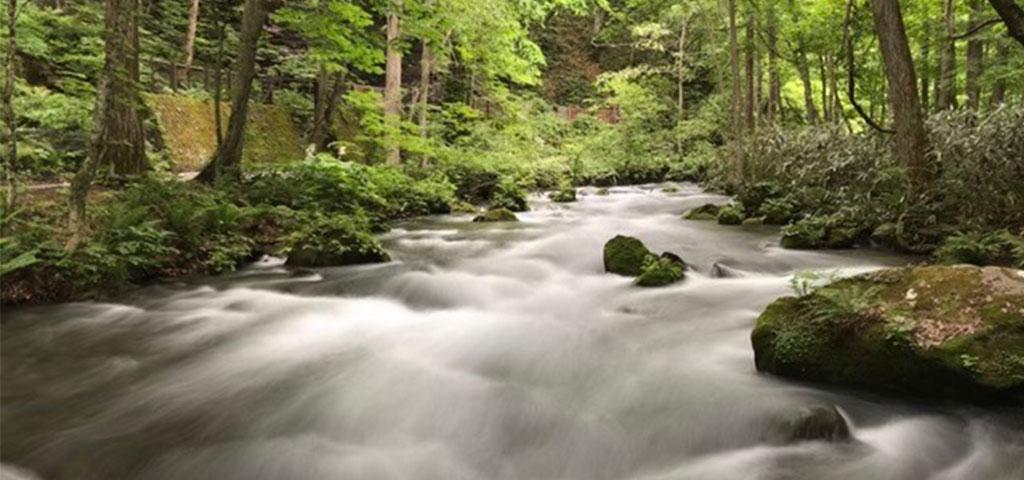







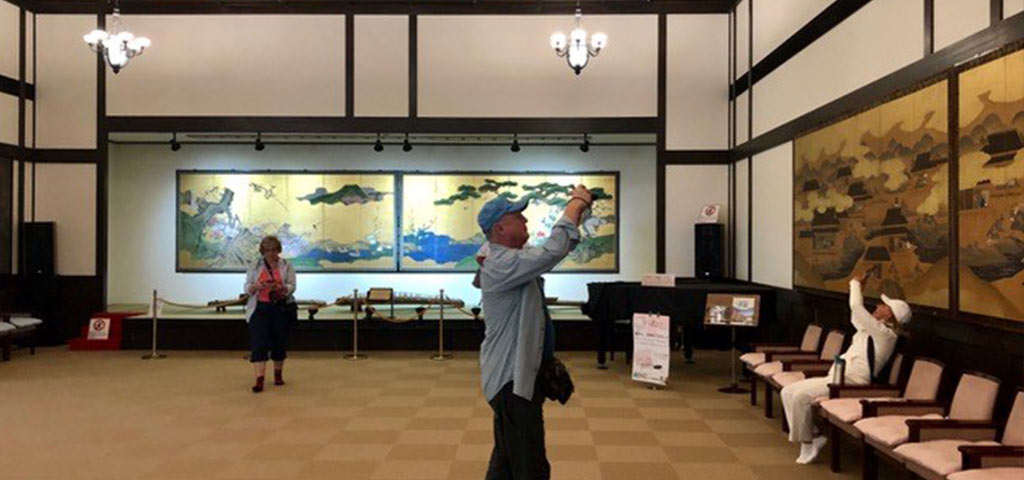
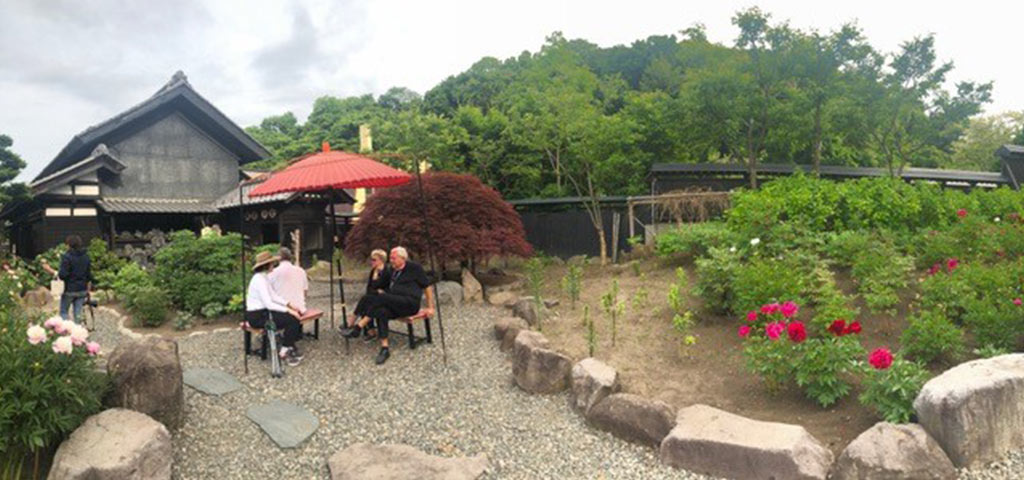
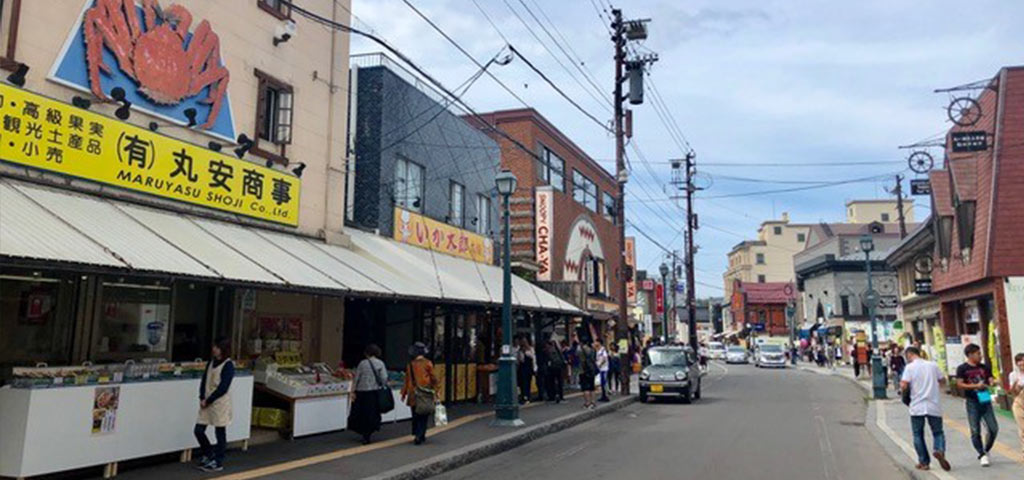
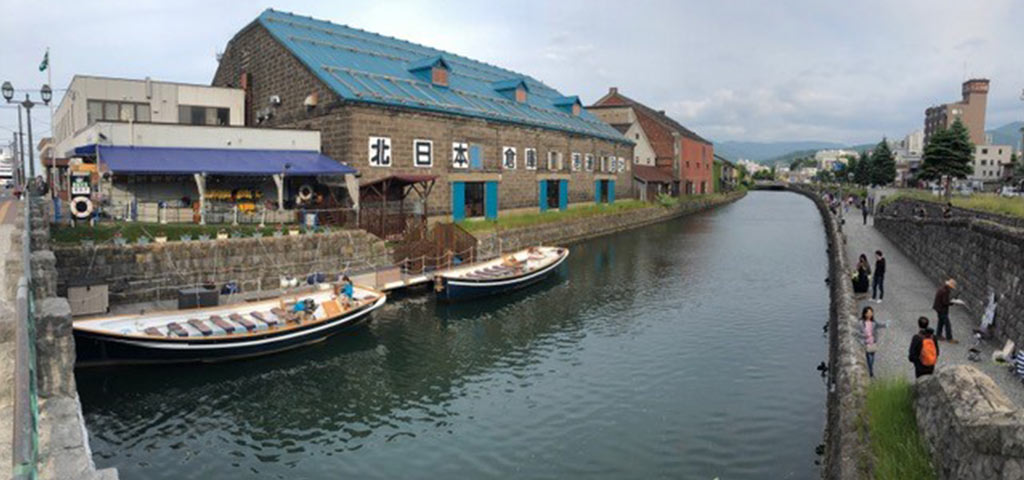
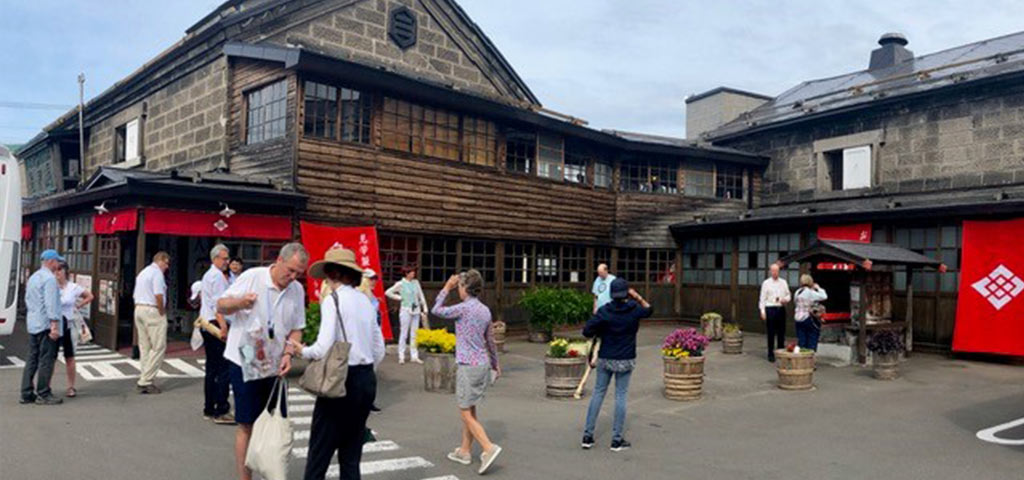
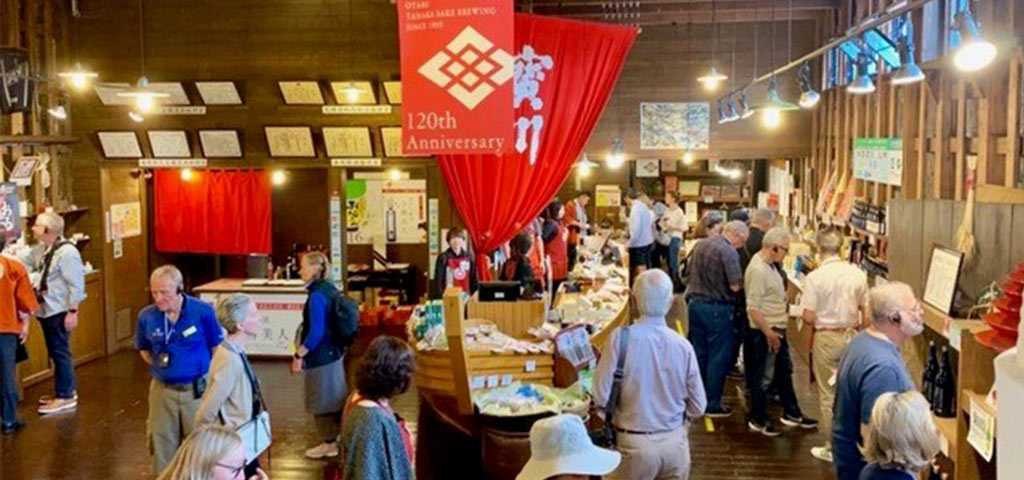
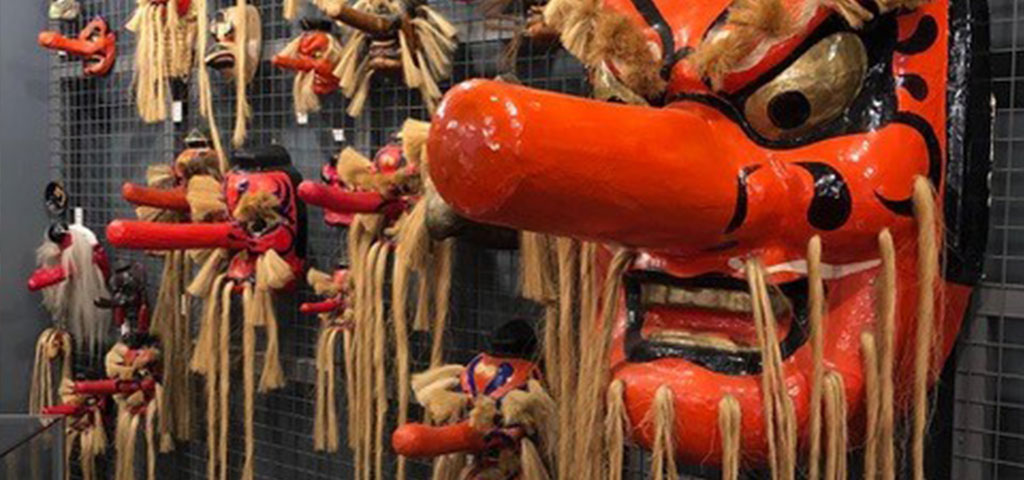

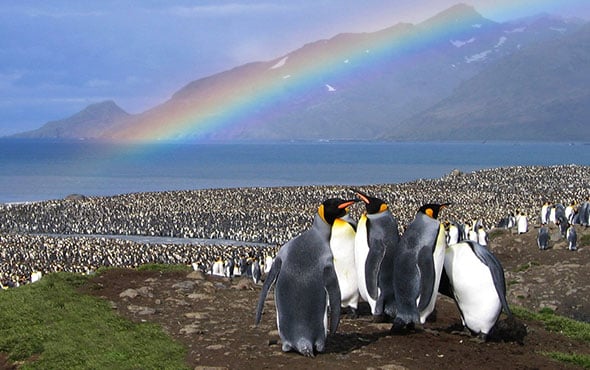
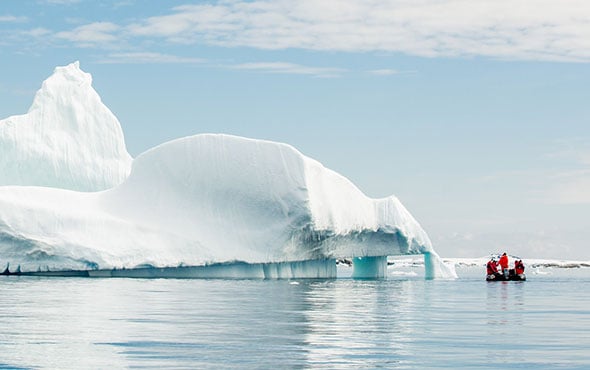
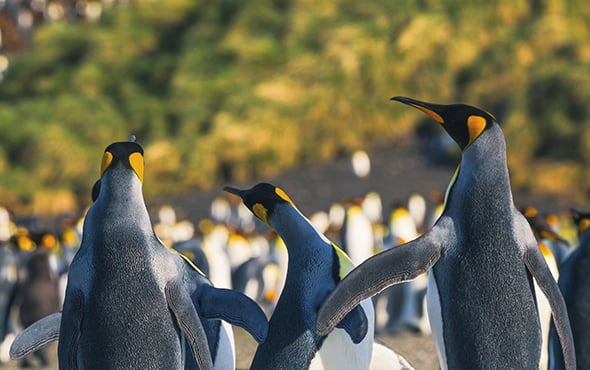



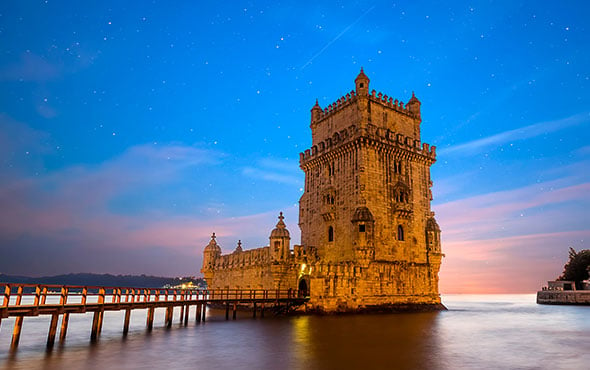



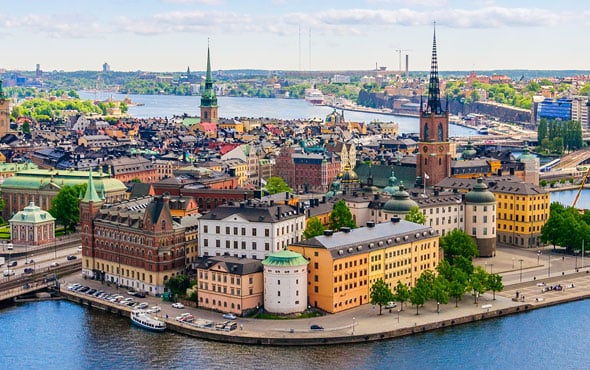



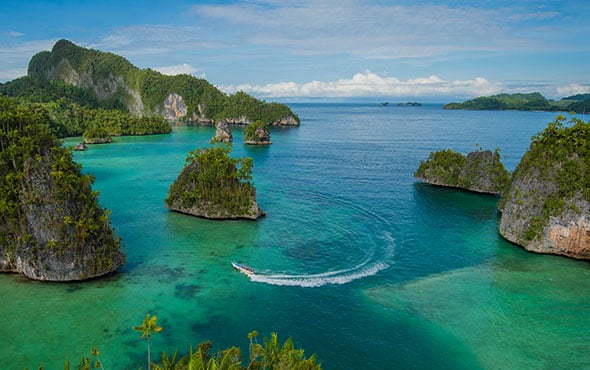
 The Americas
The Americas
 Europe, Middle East and Africa
Europe, Middle East and Africa Australia, NZ and Asia
Australia, NZ and Asia